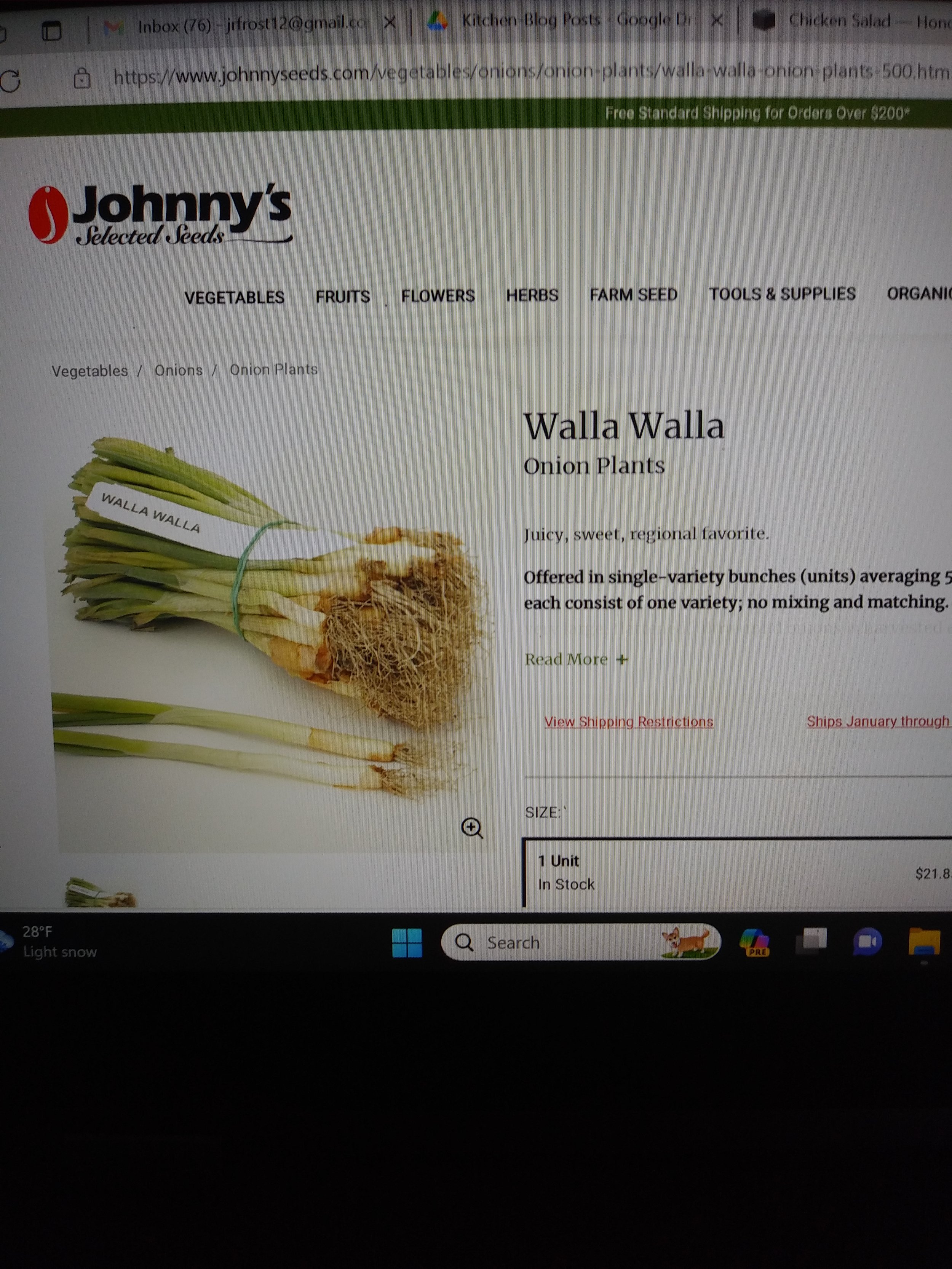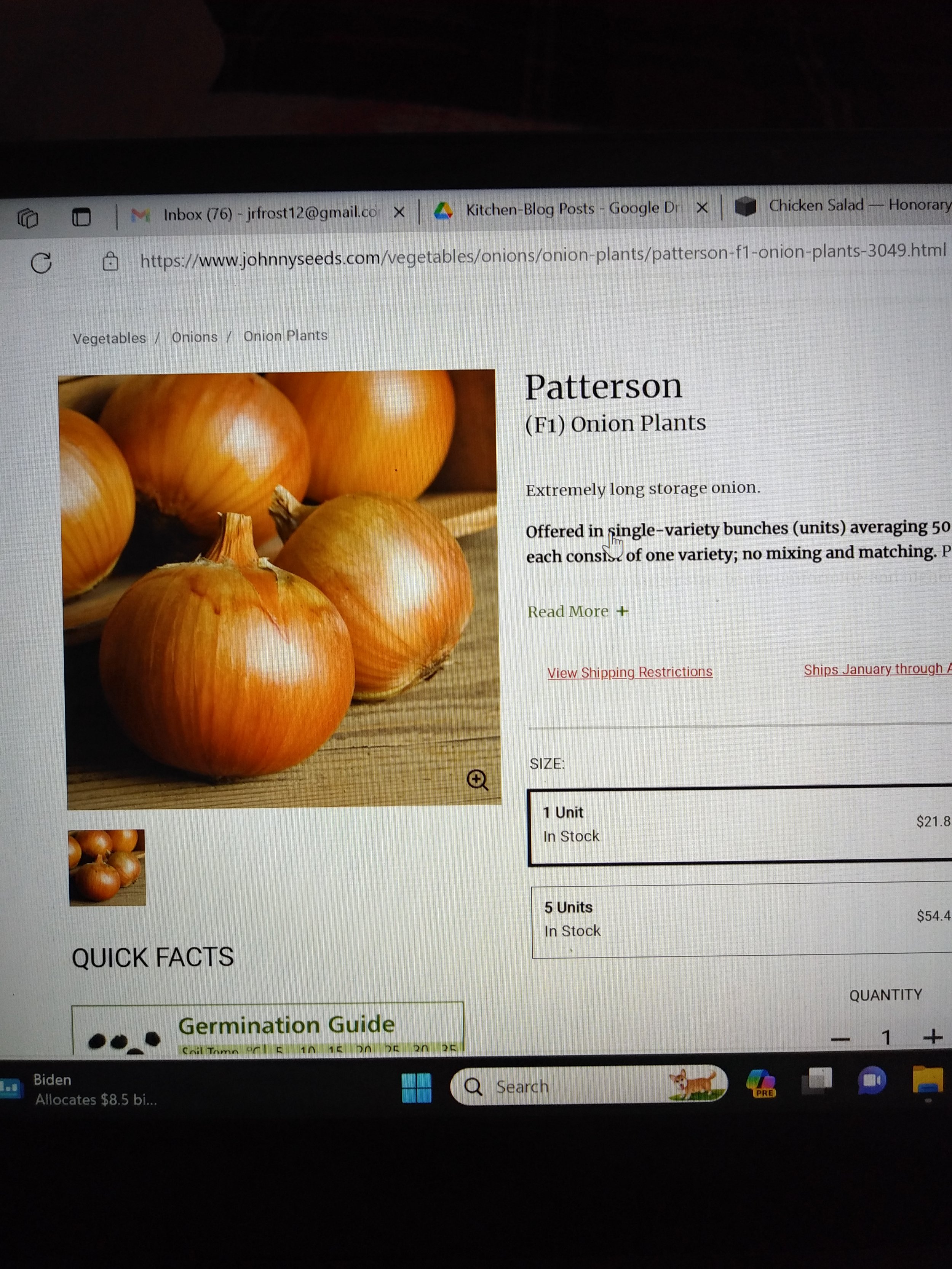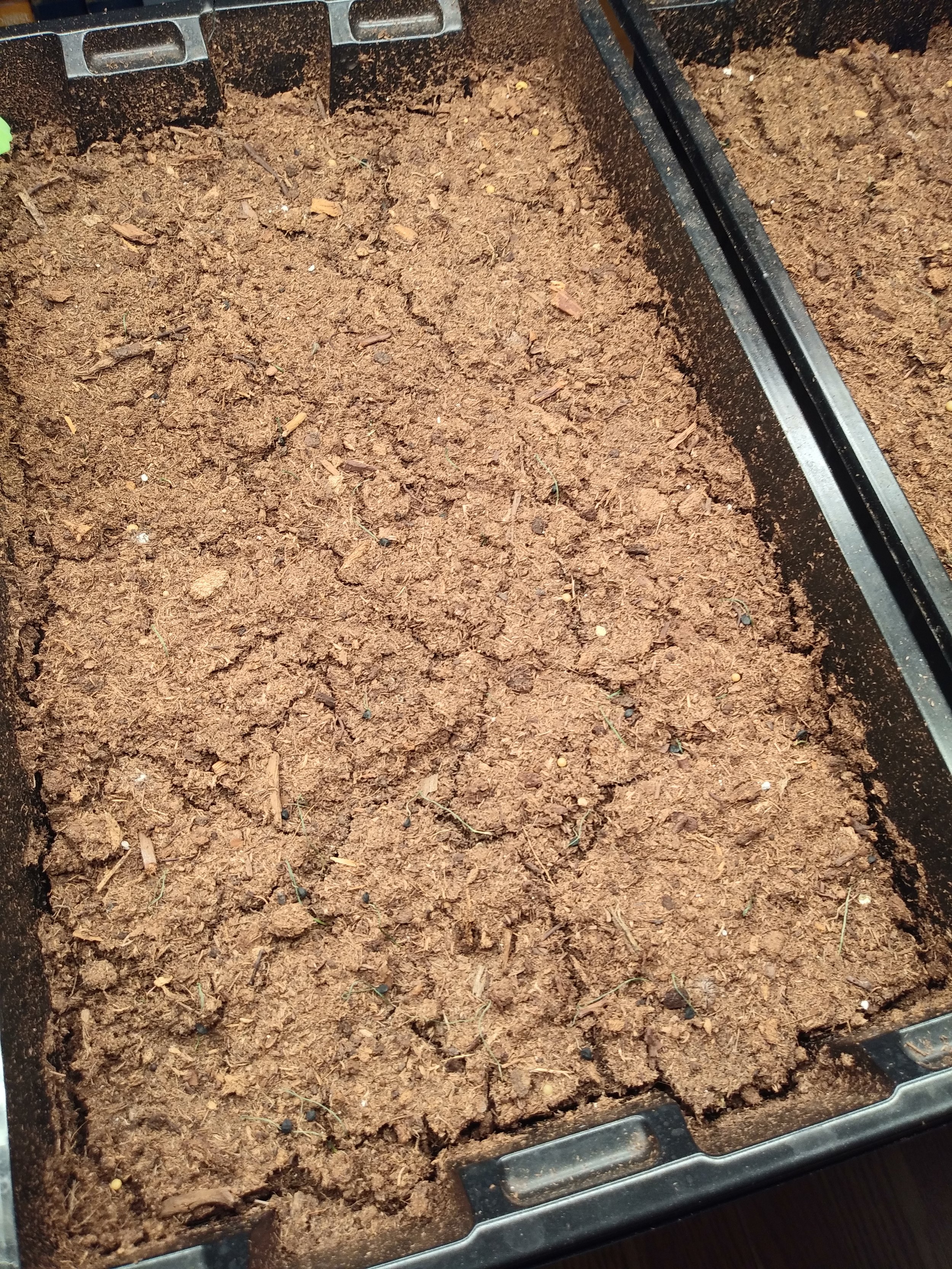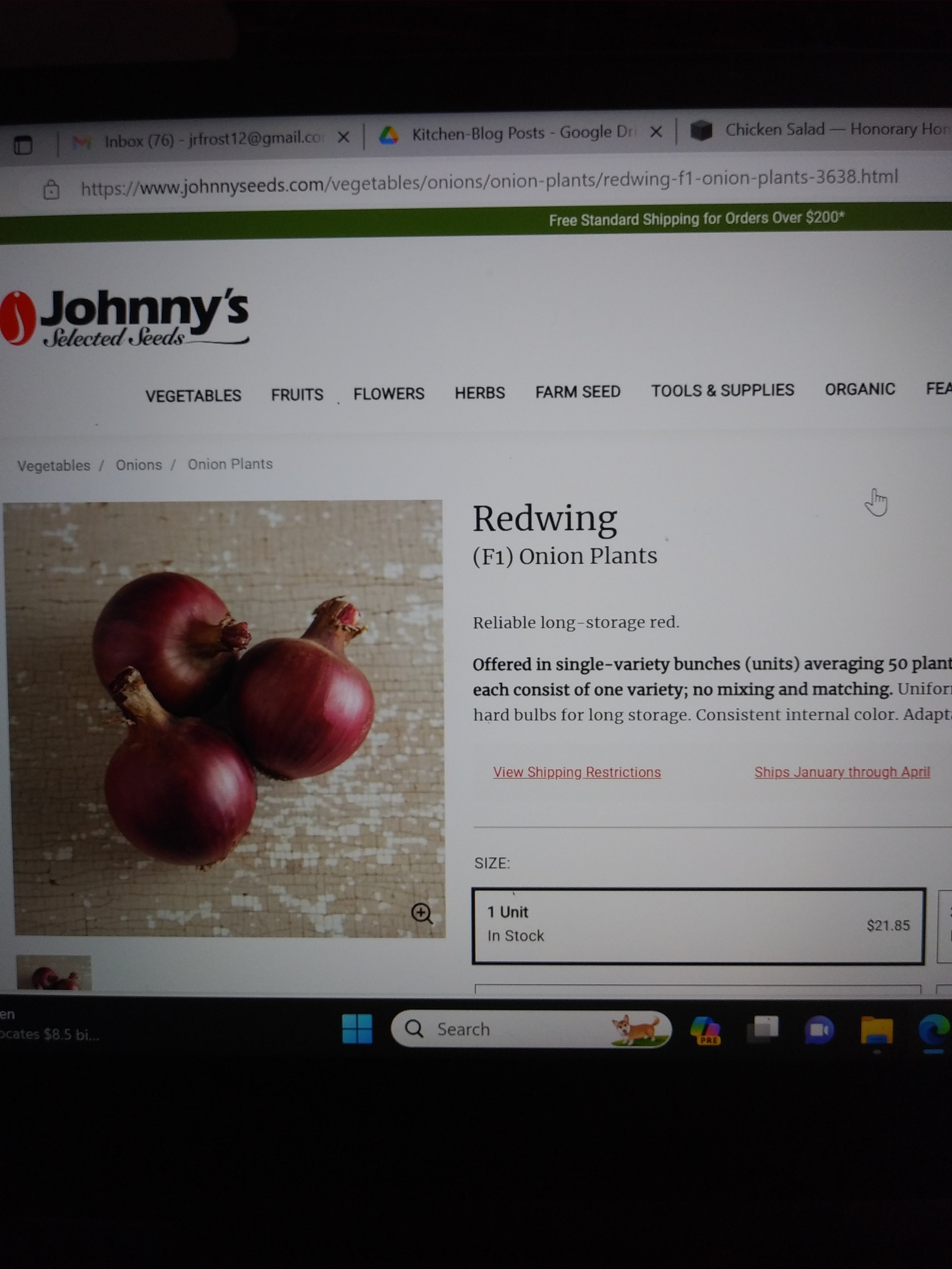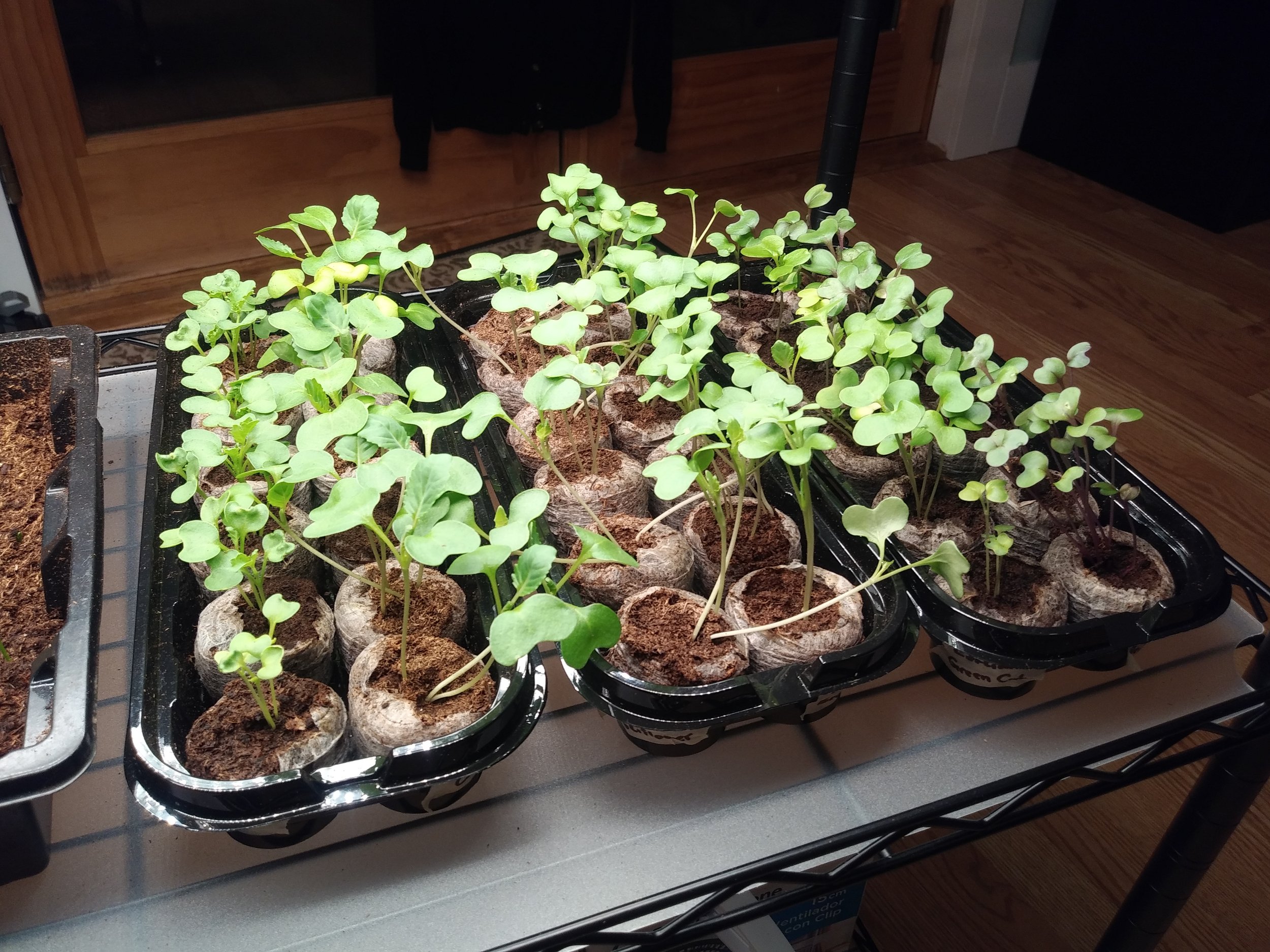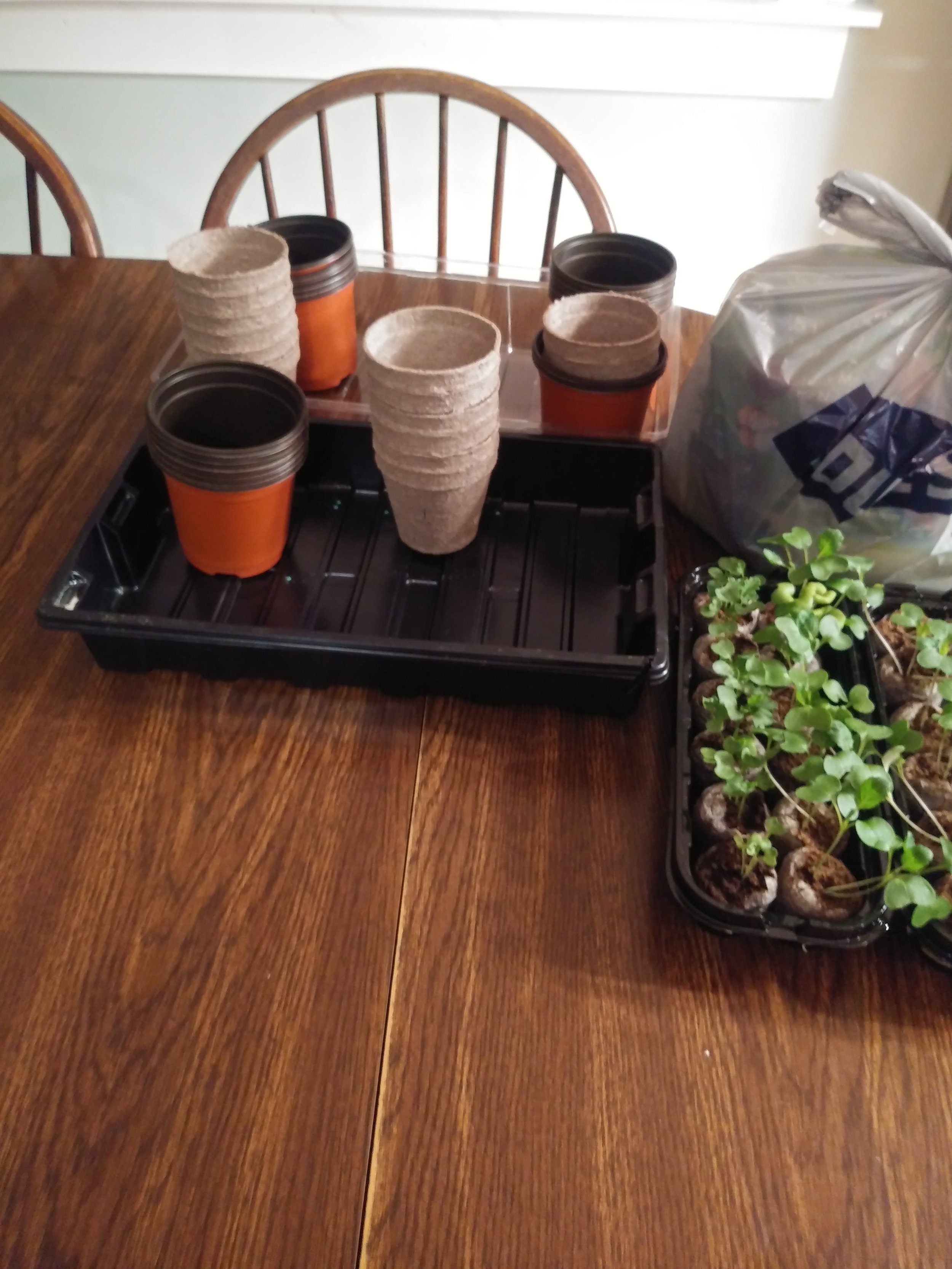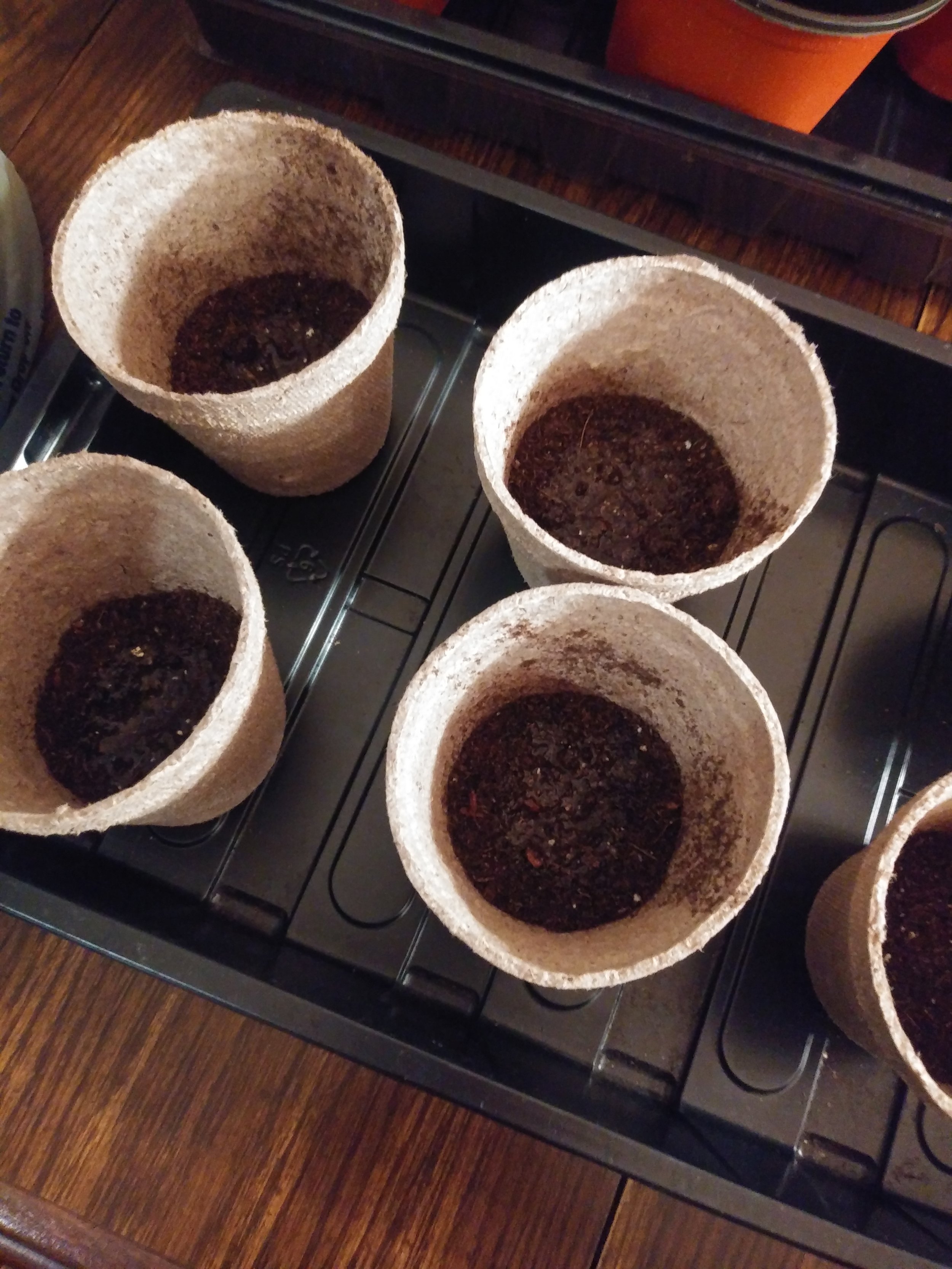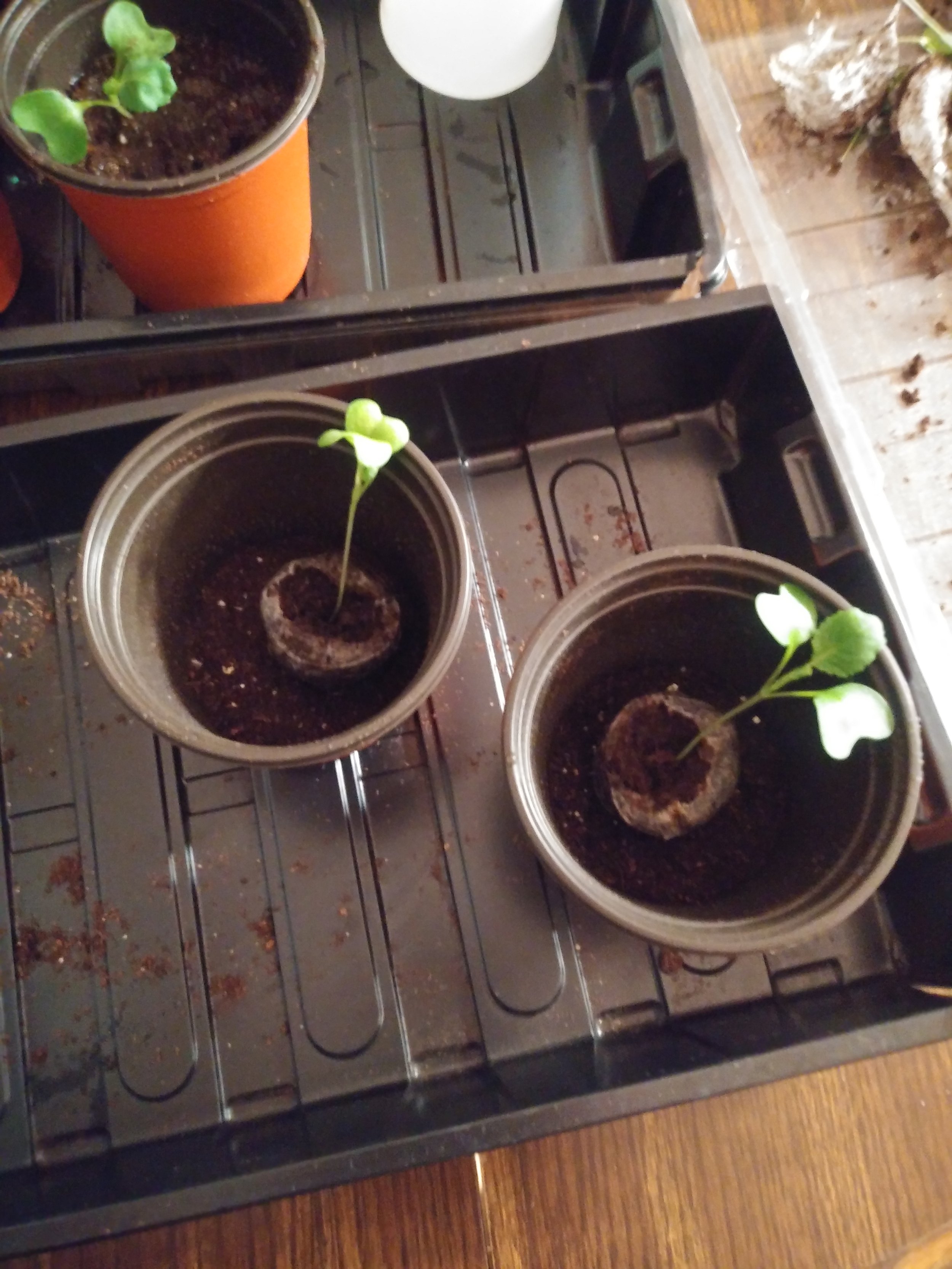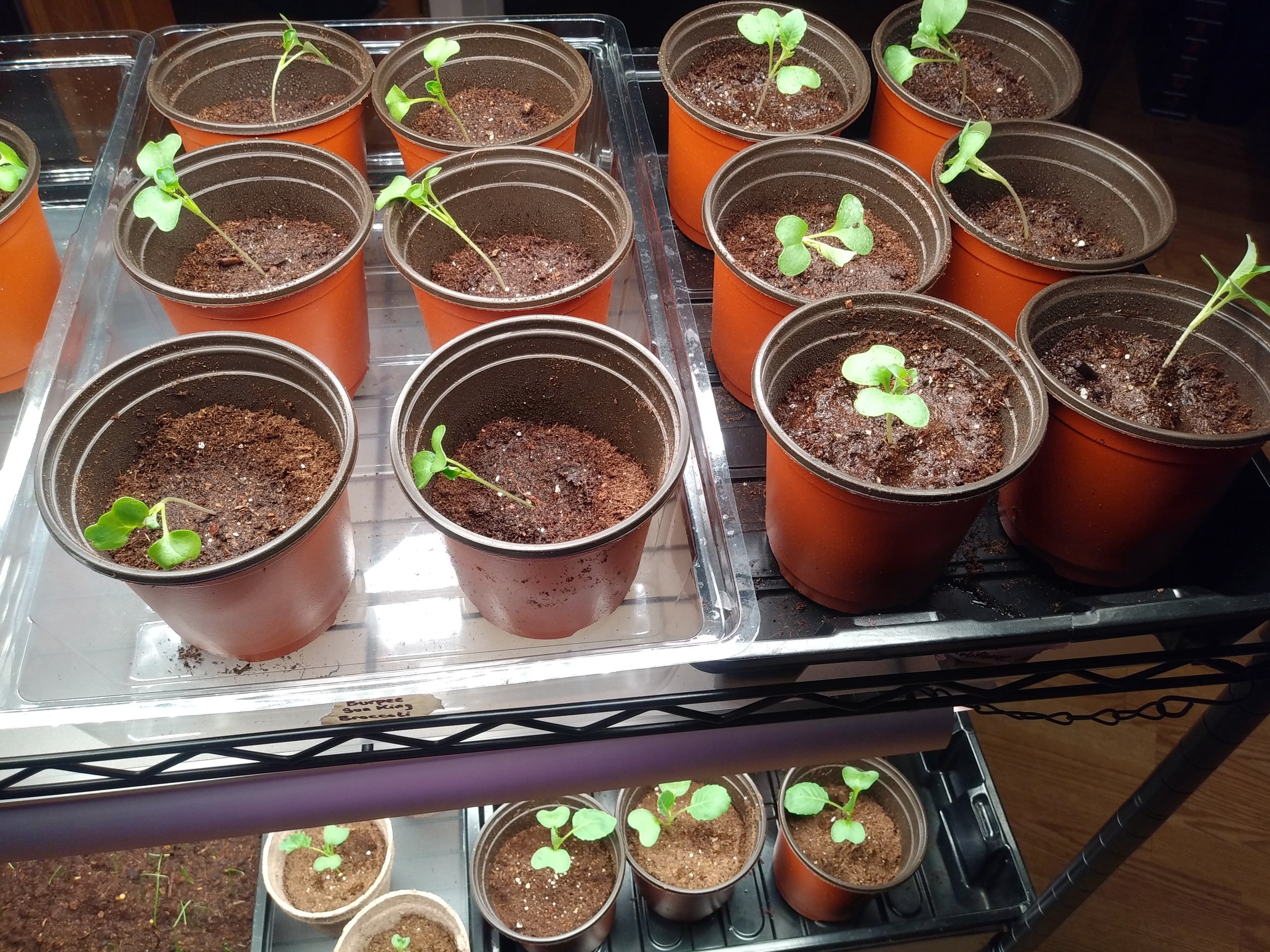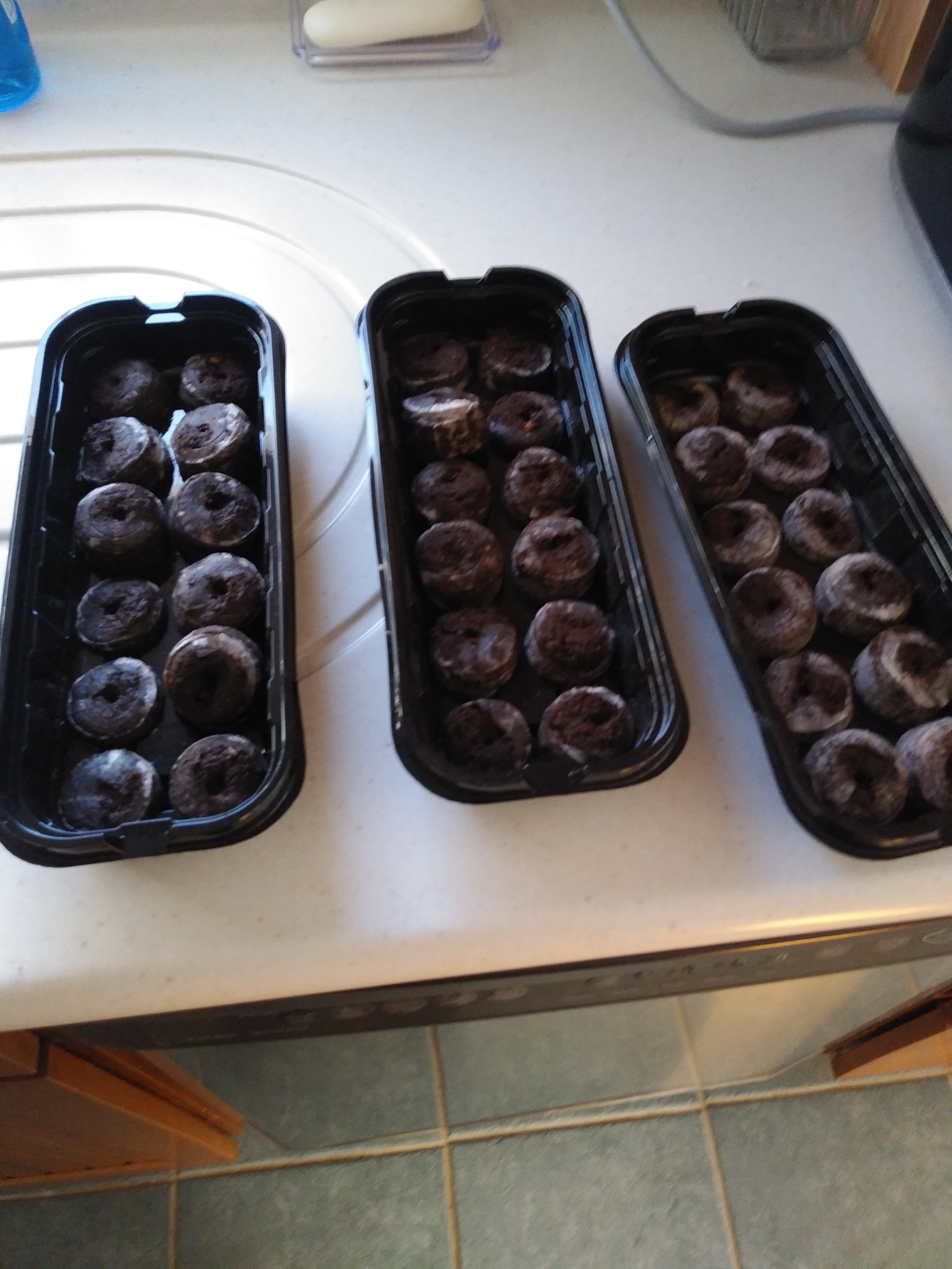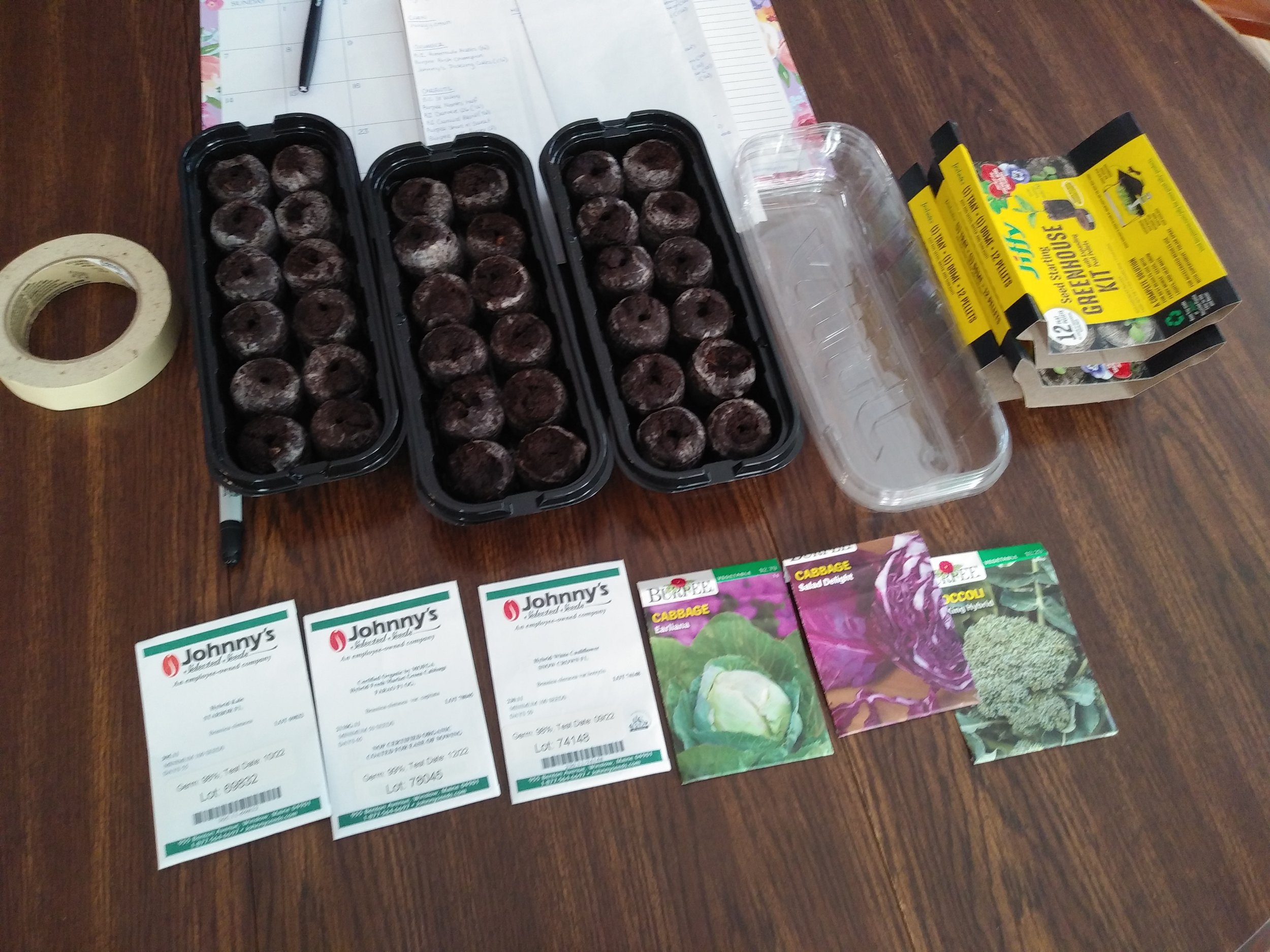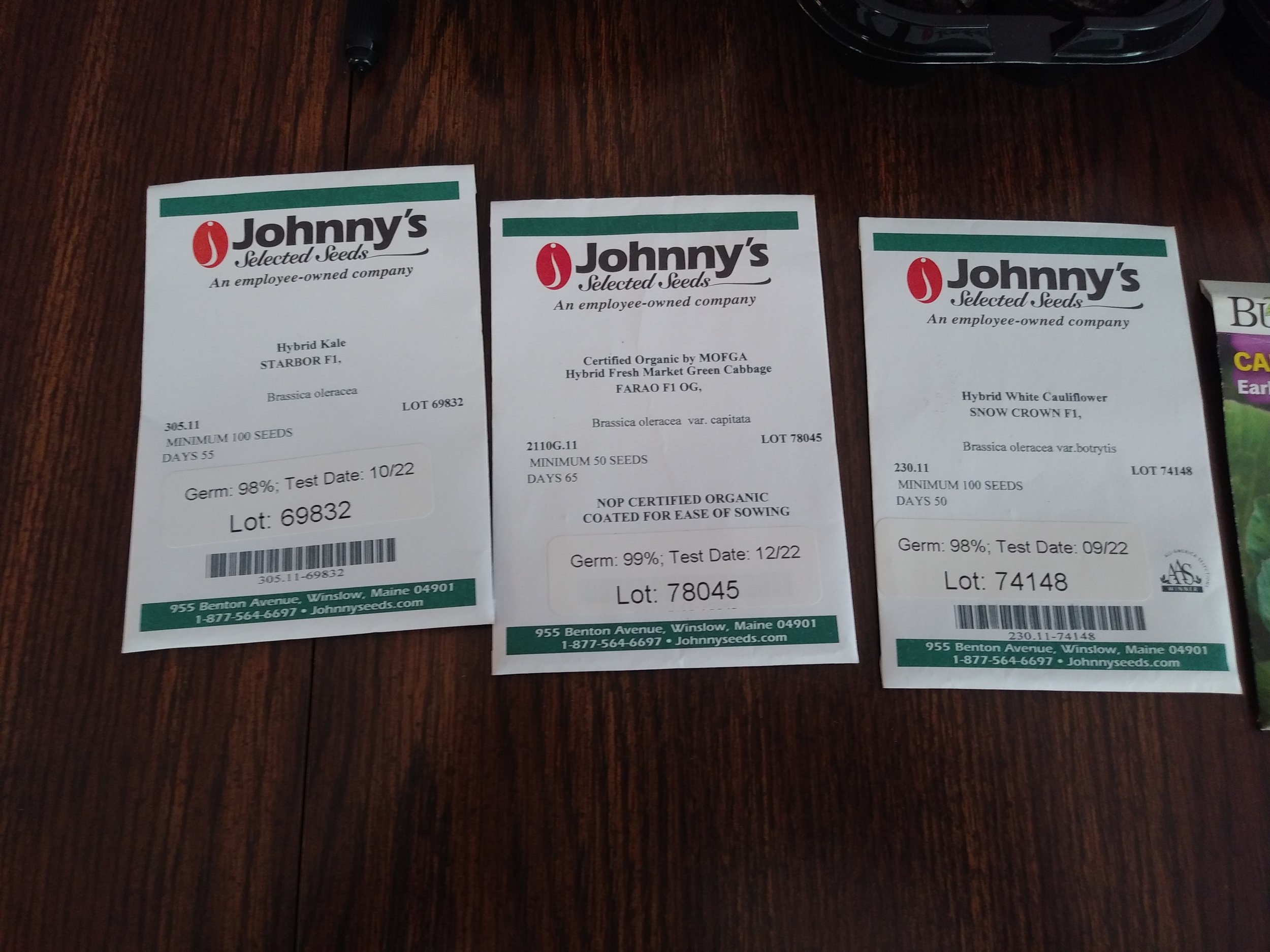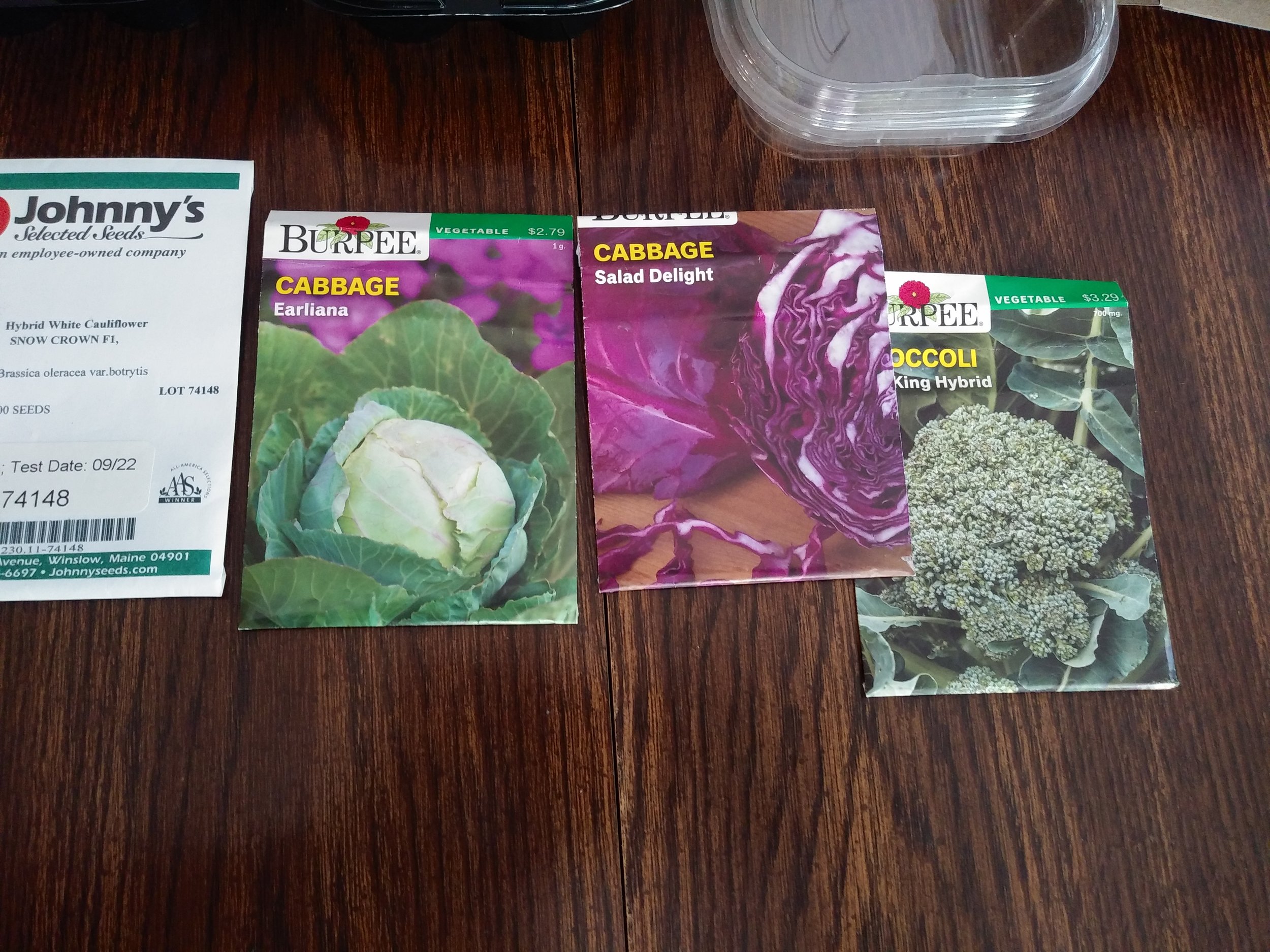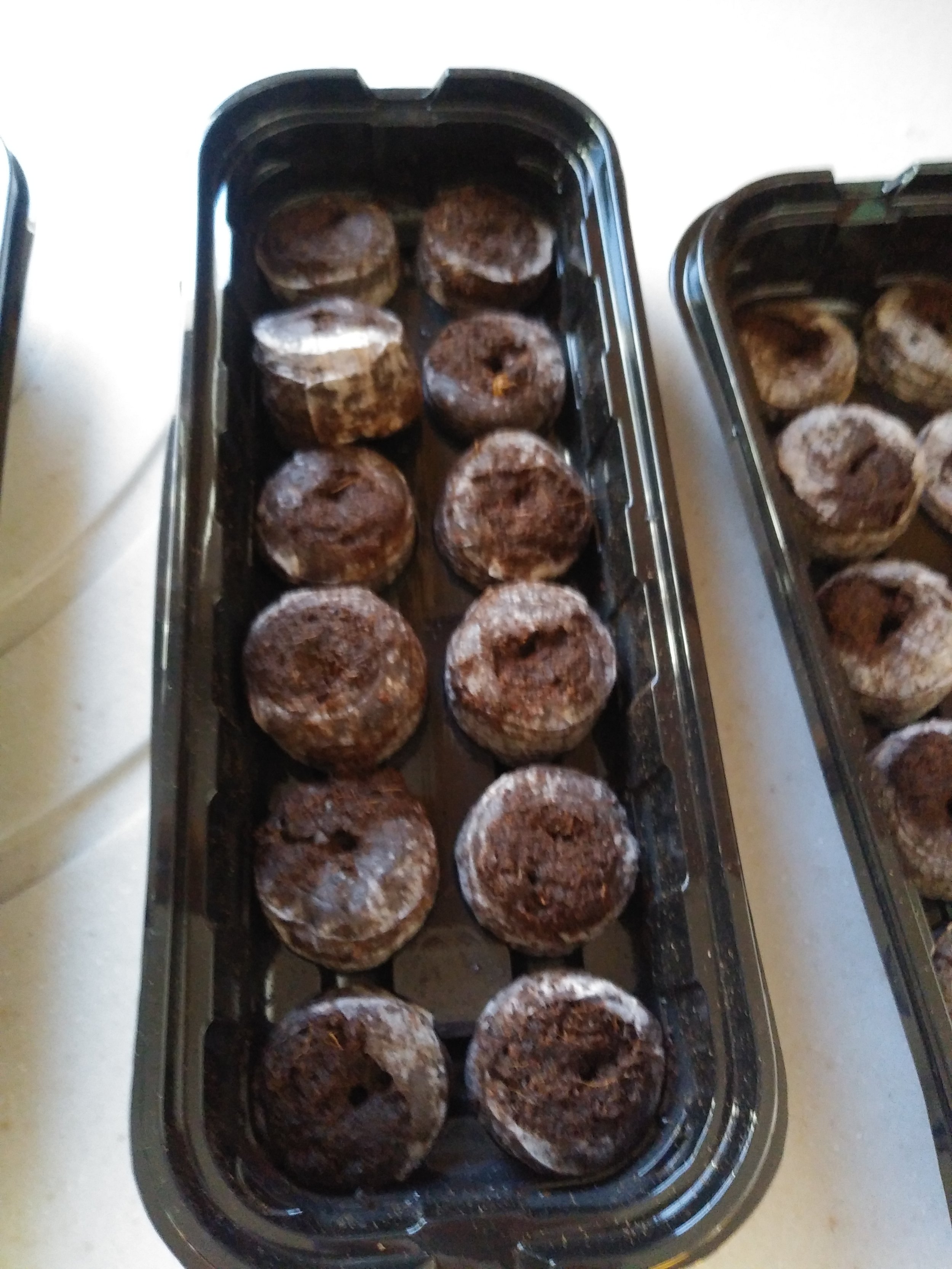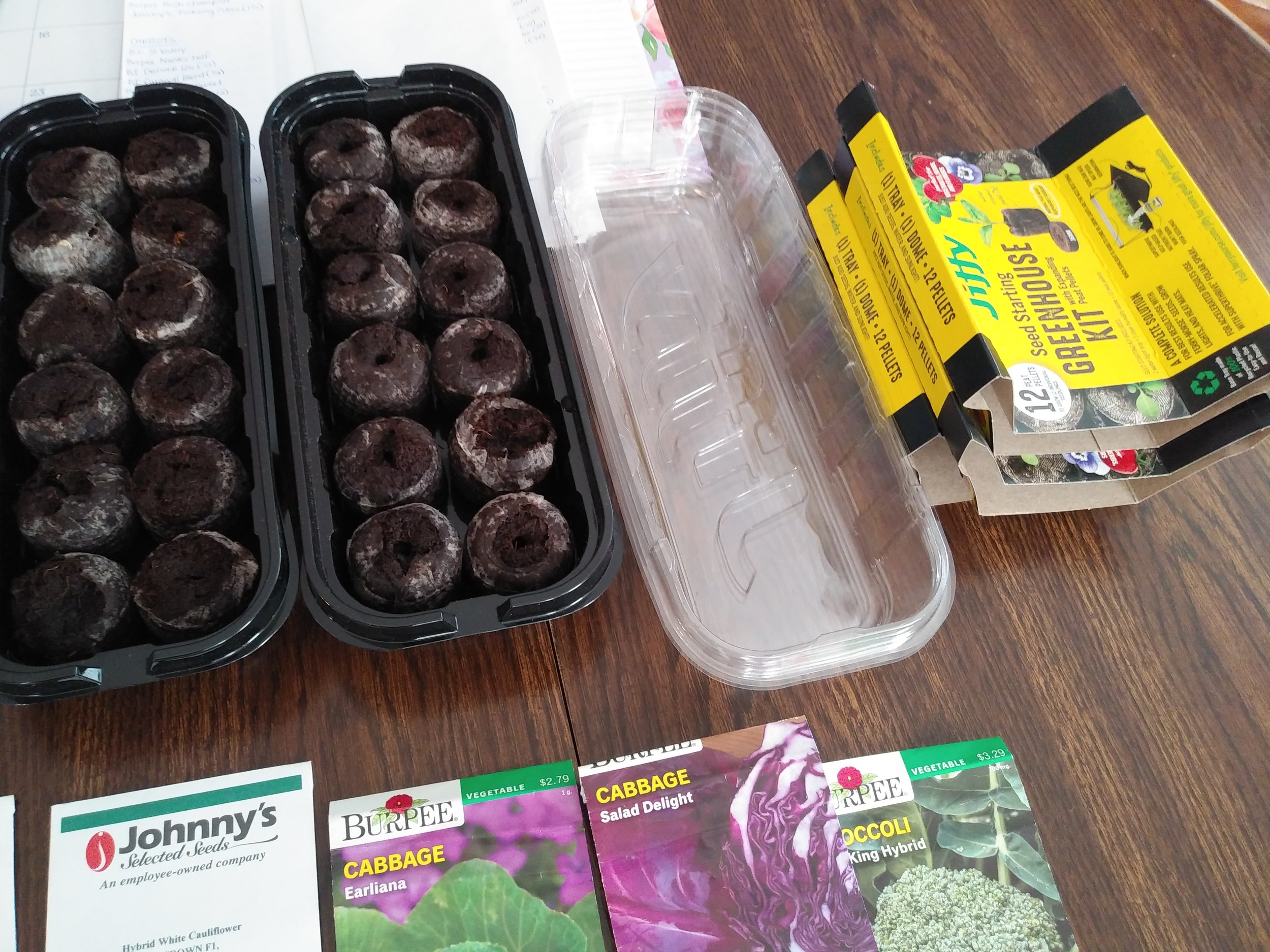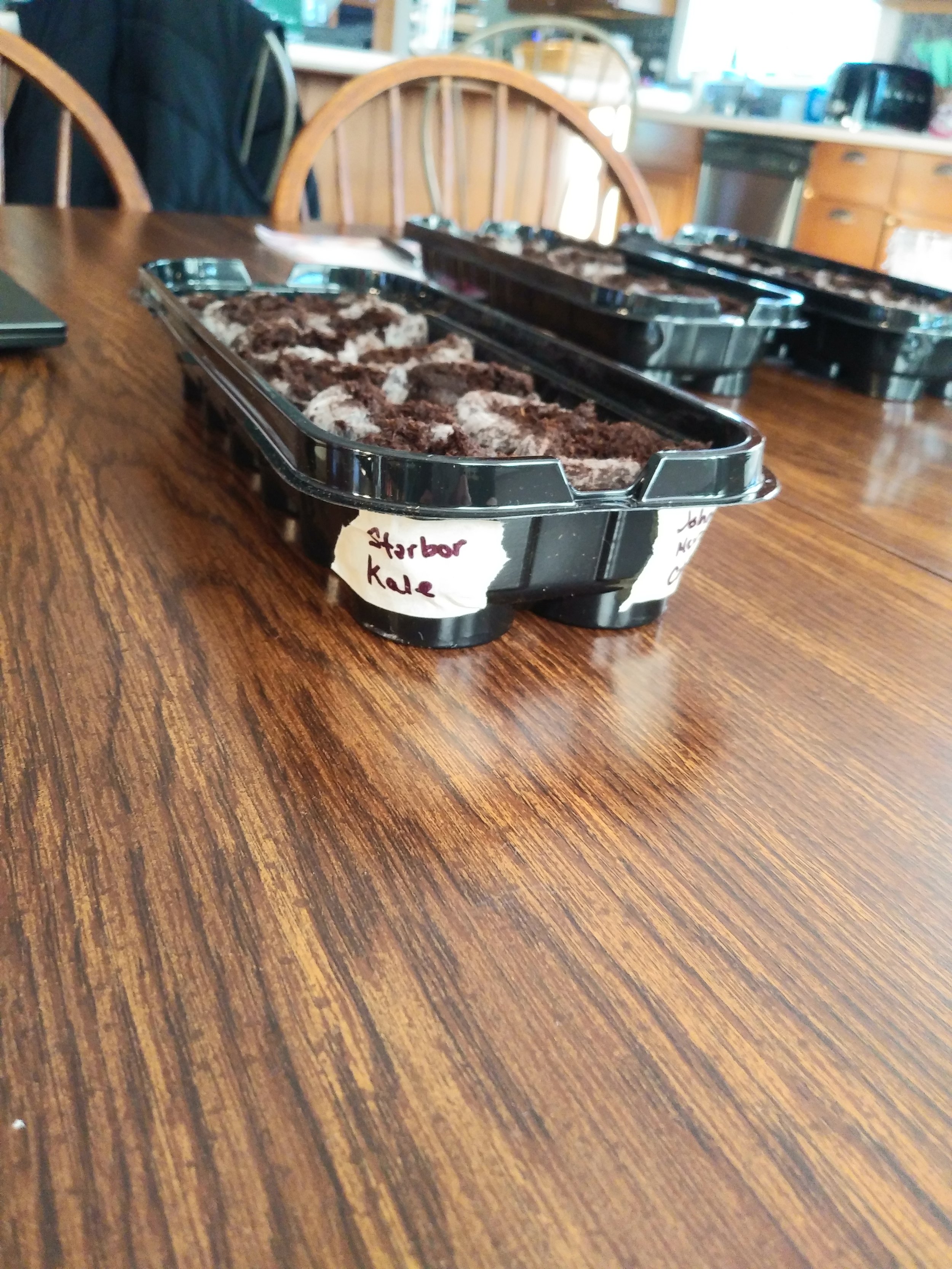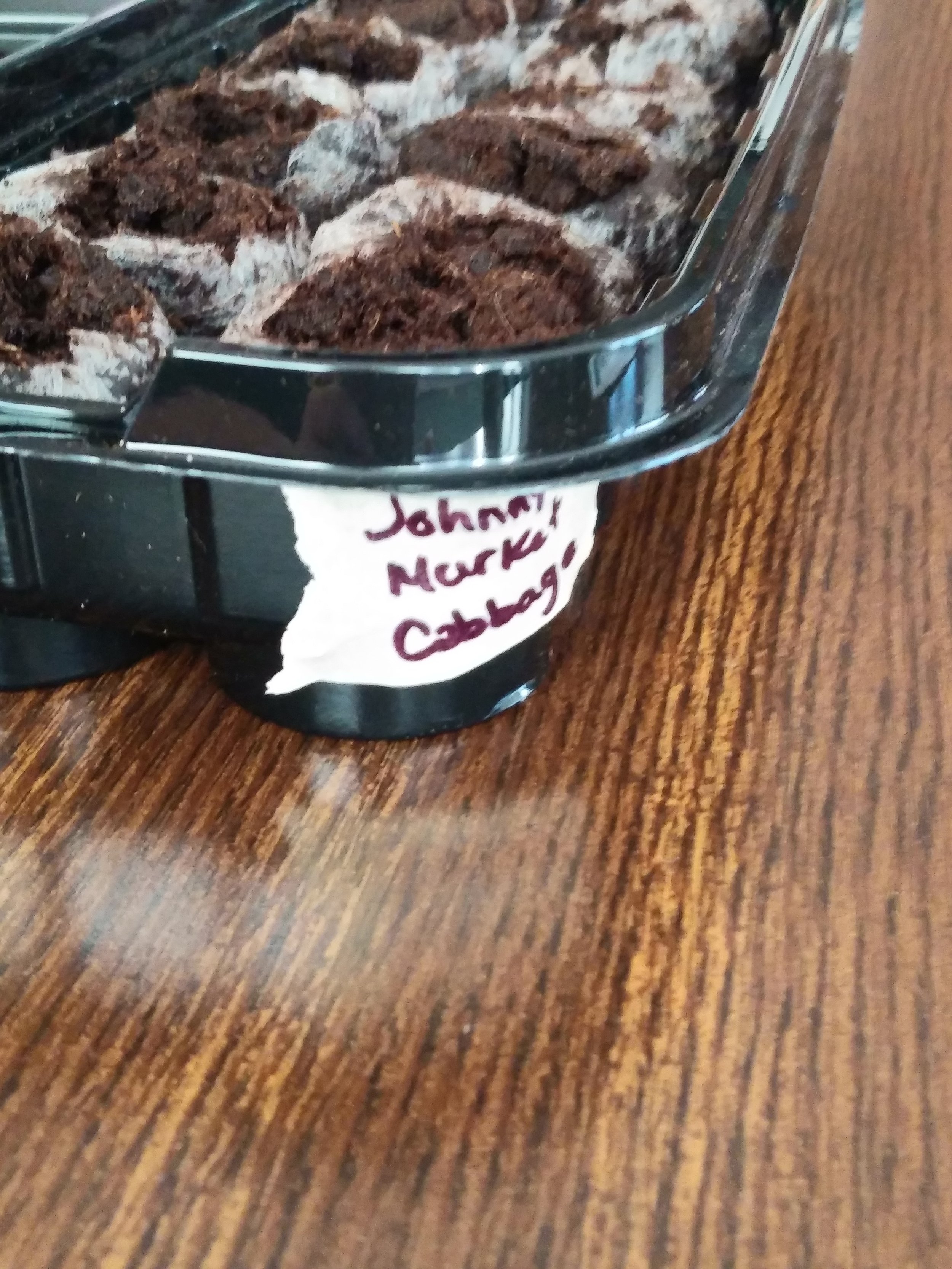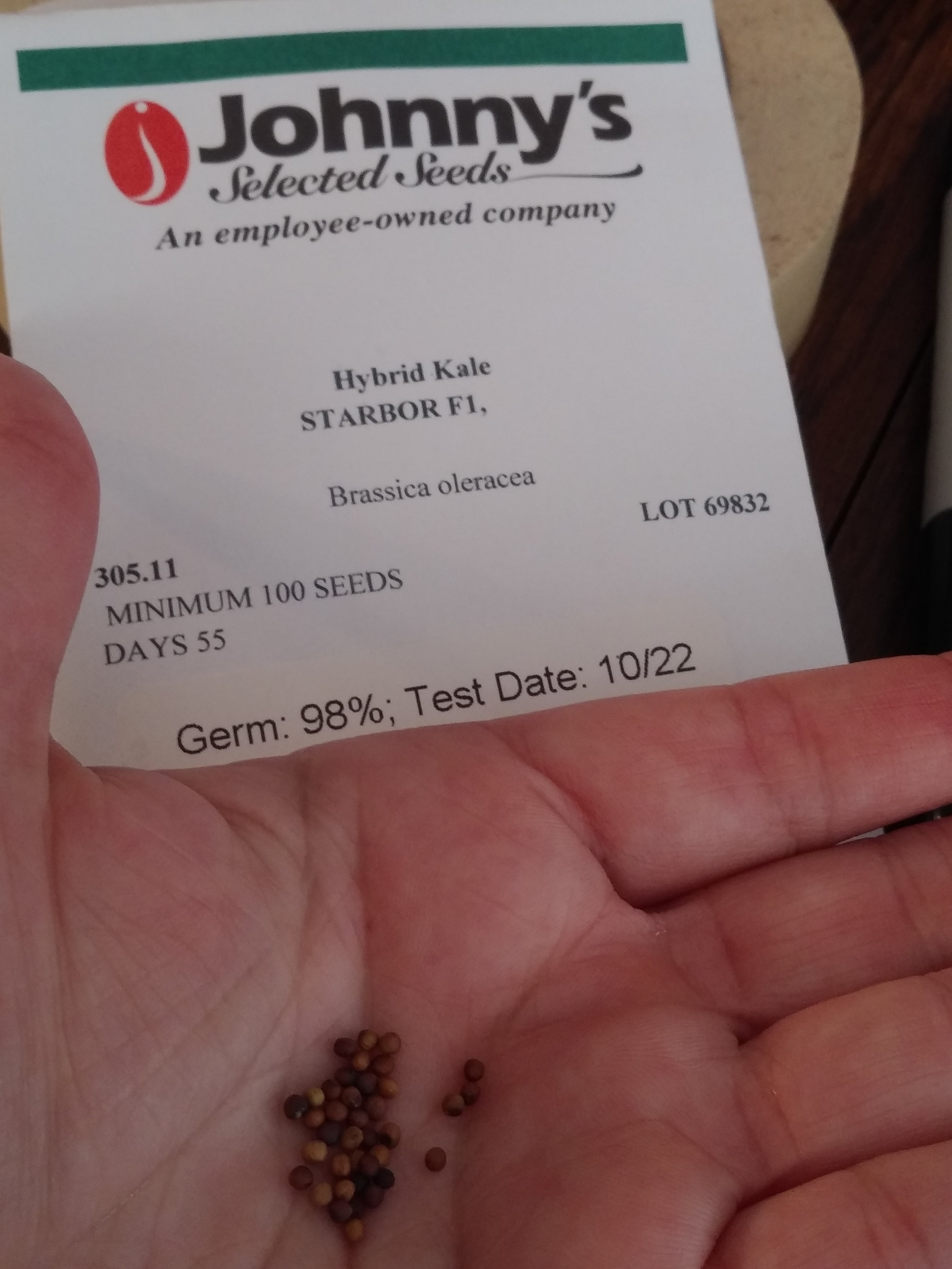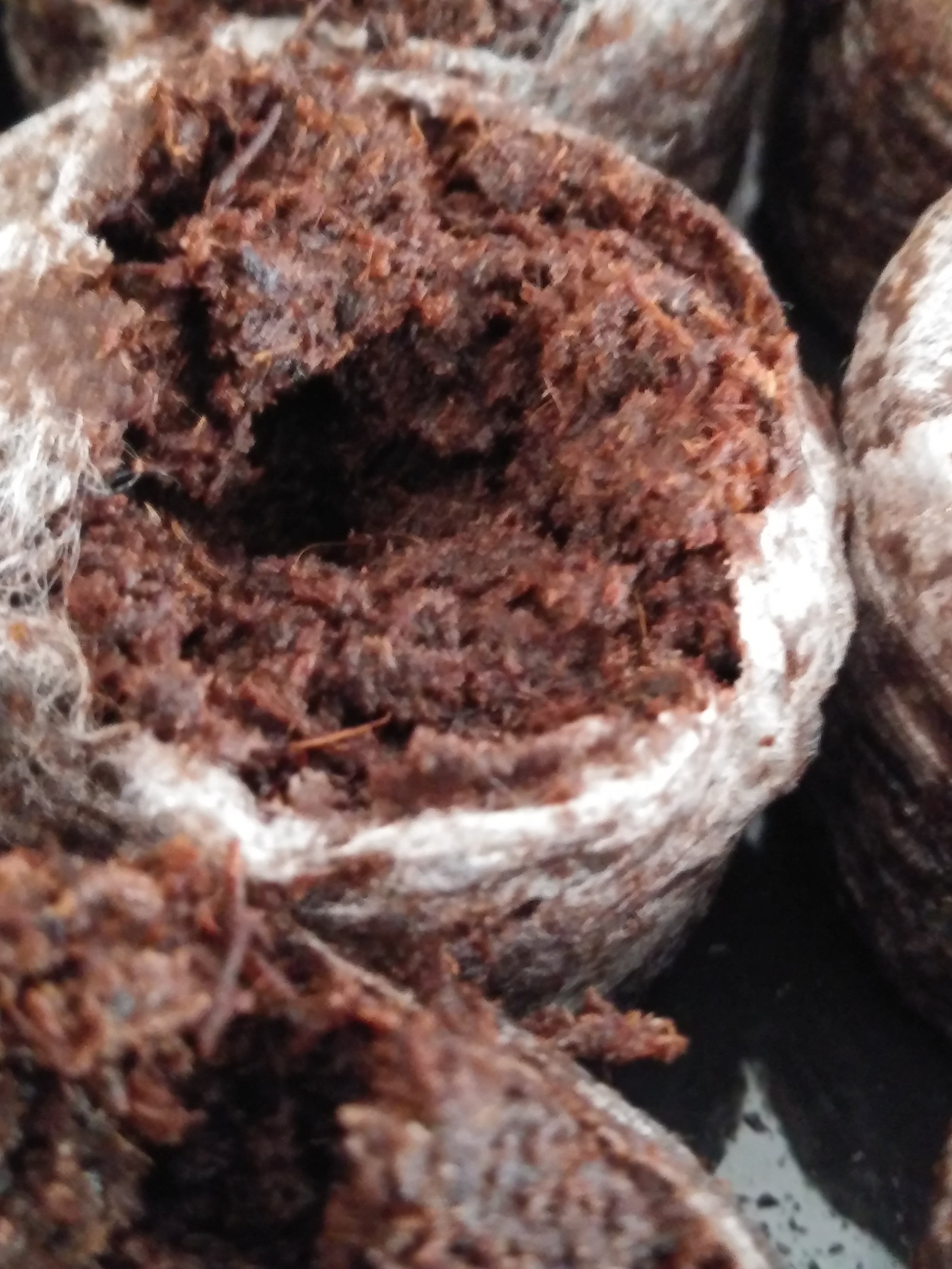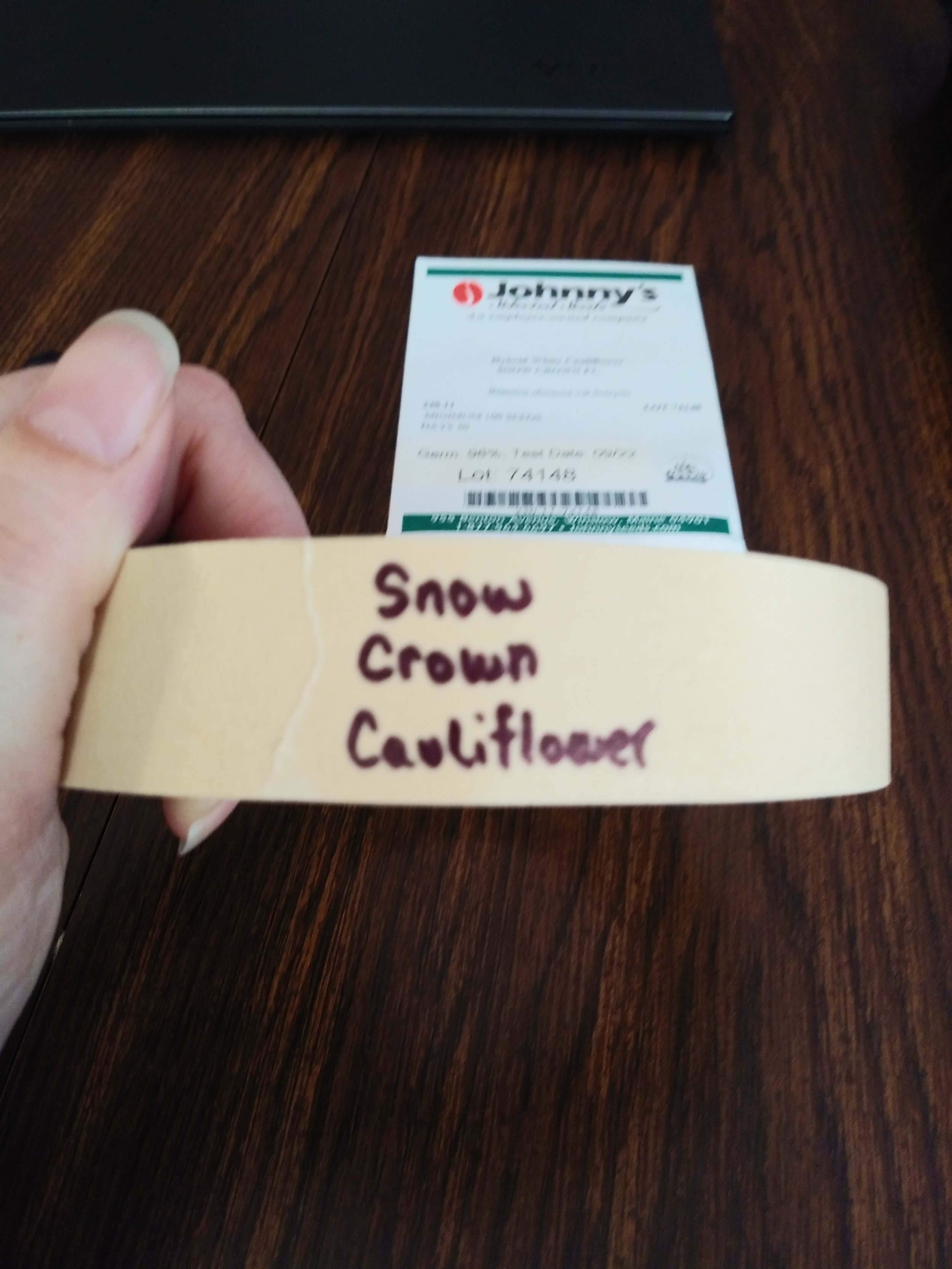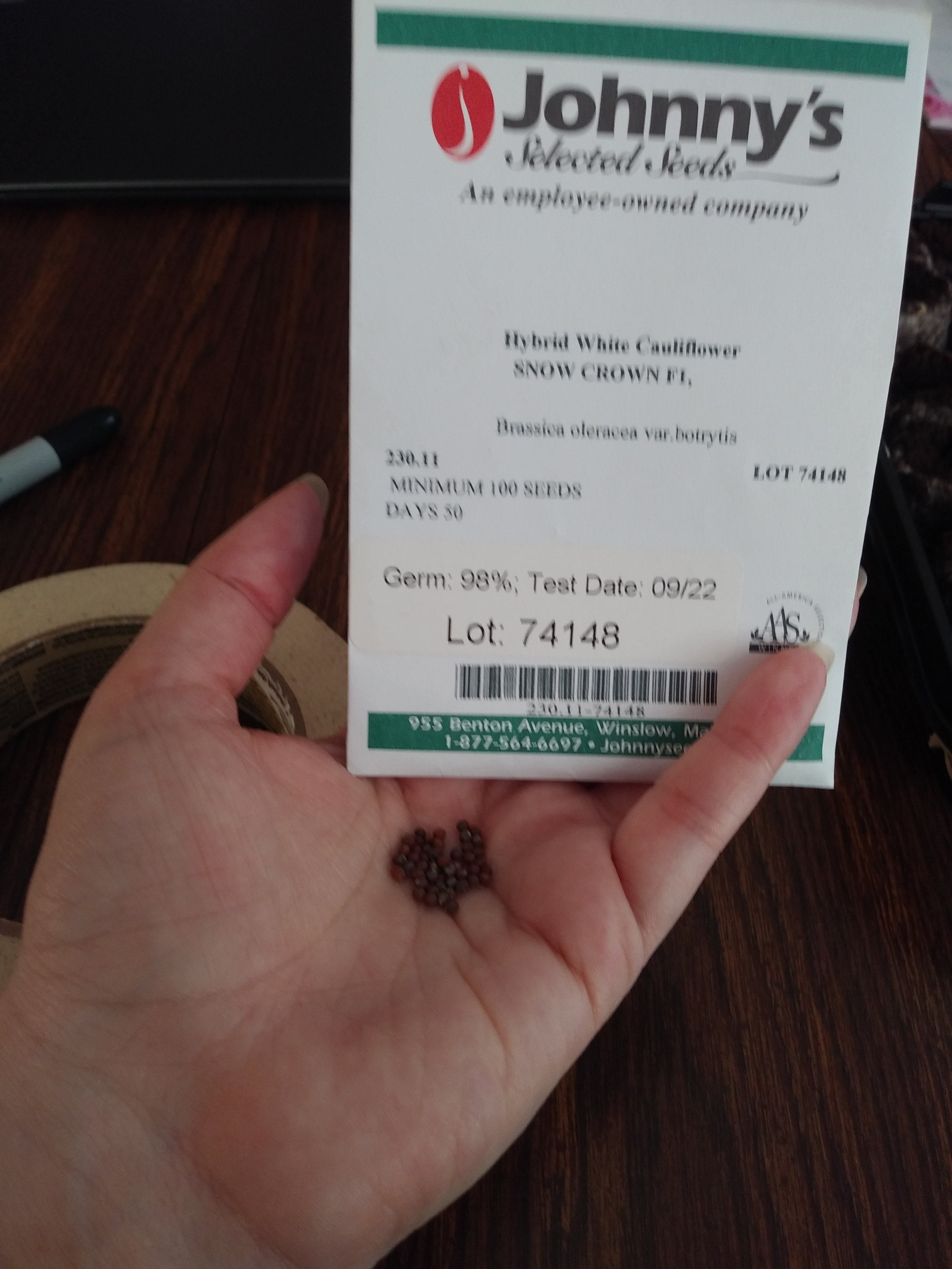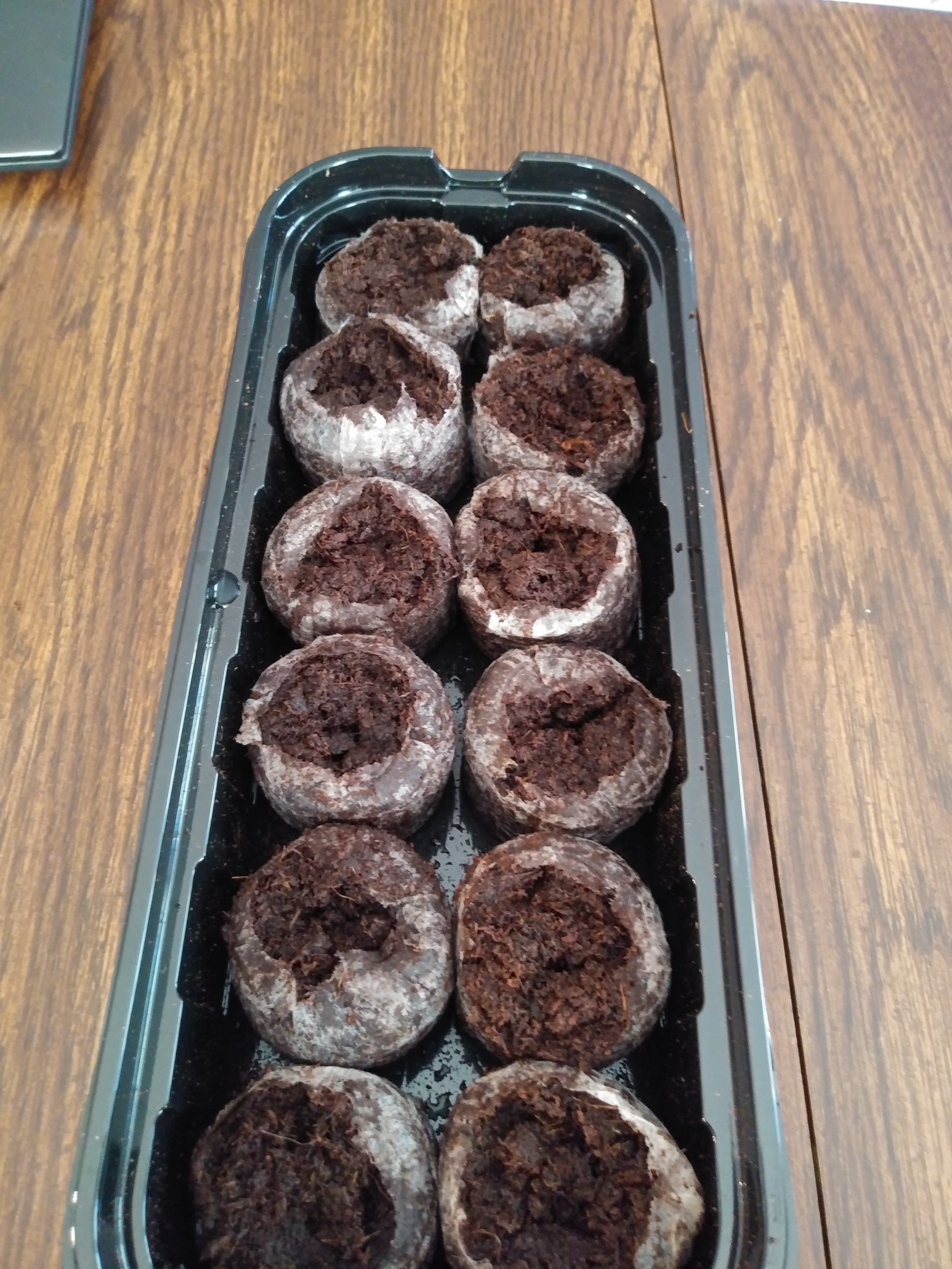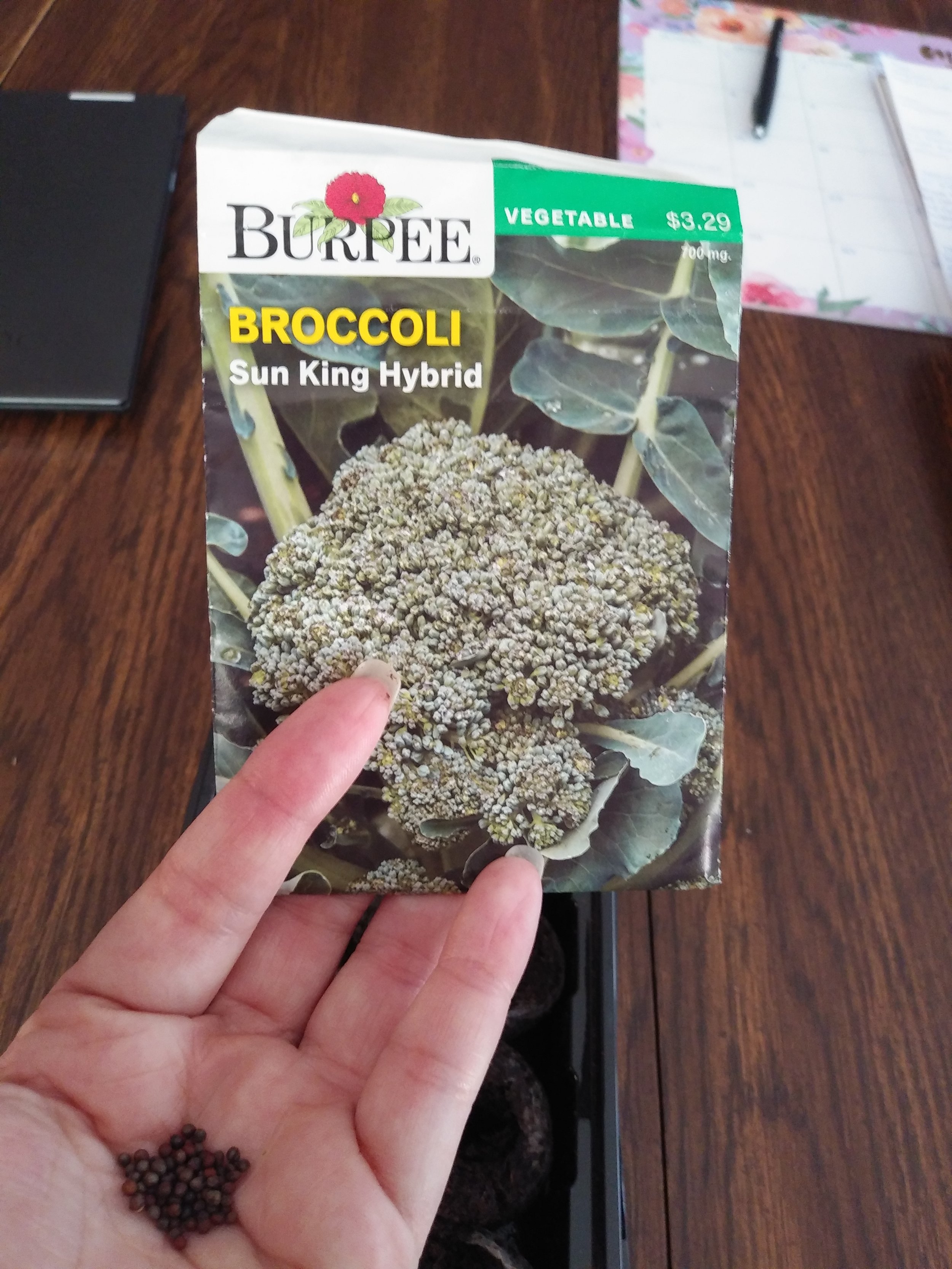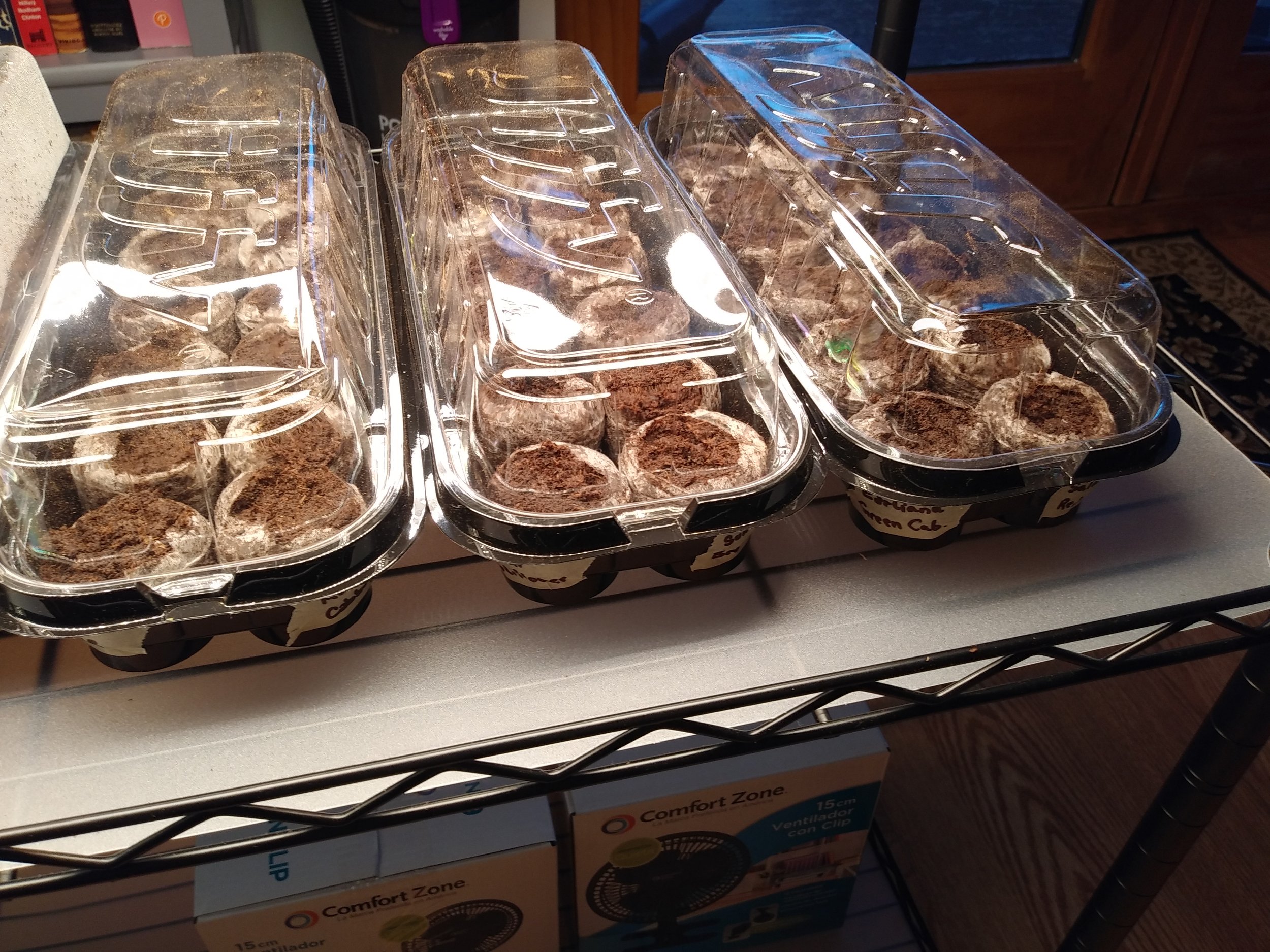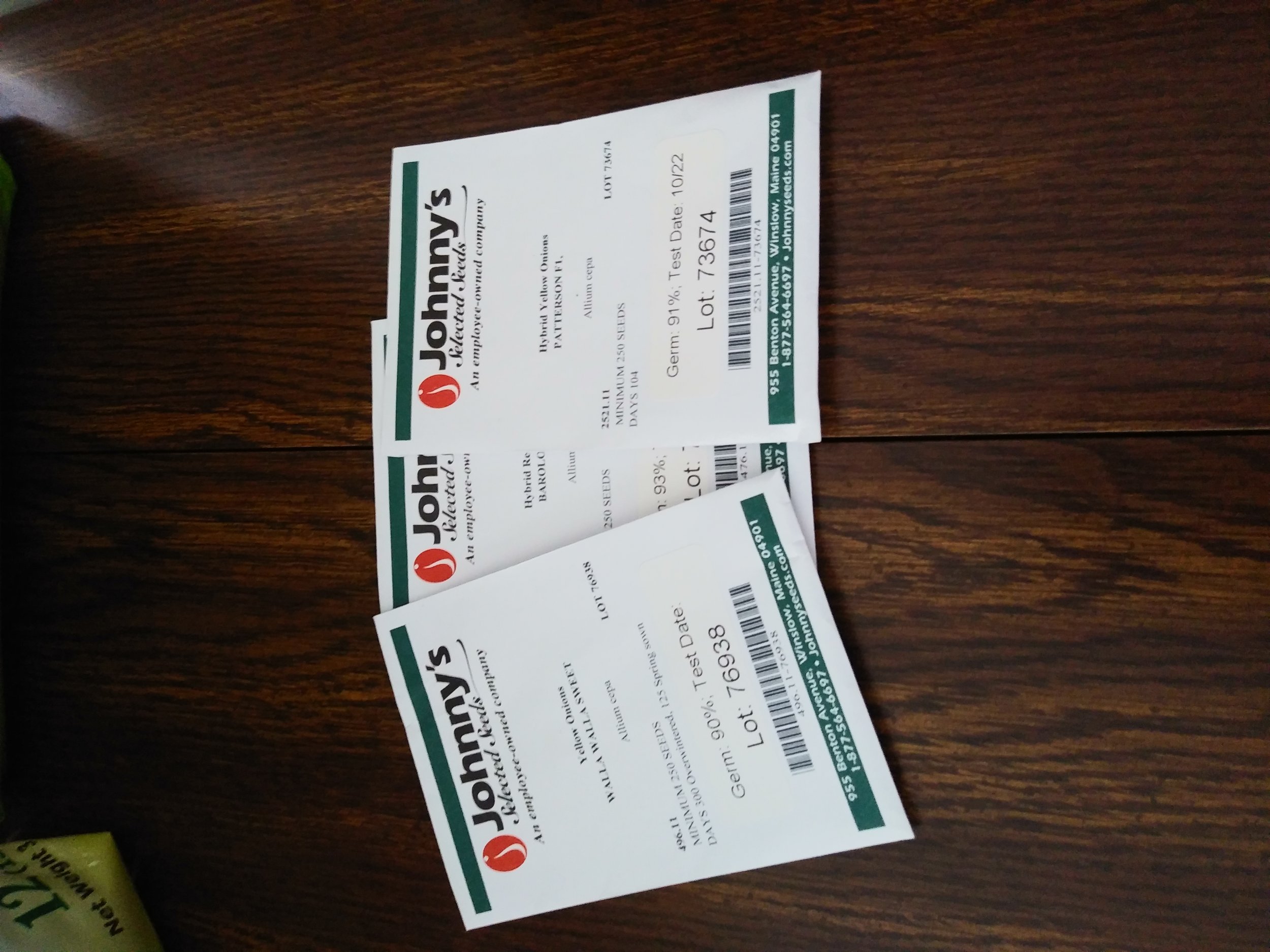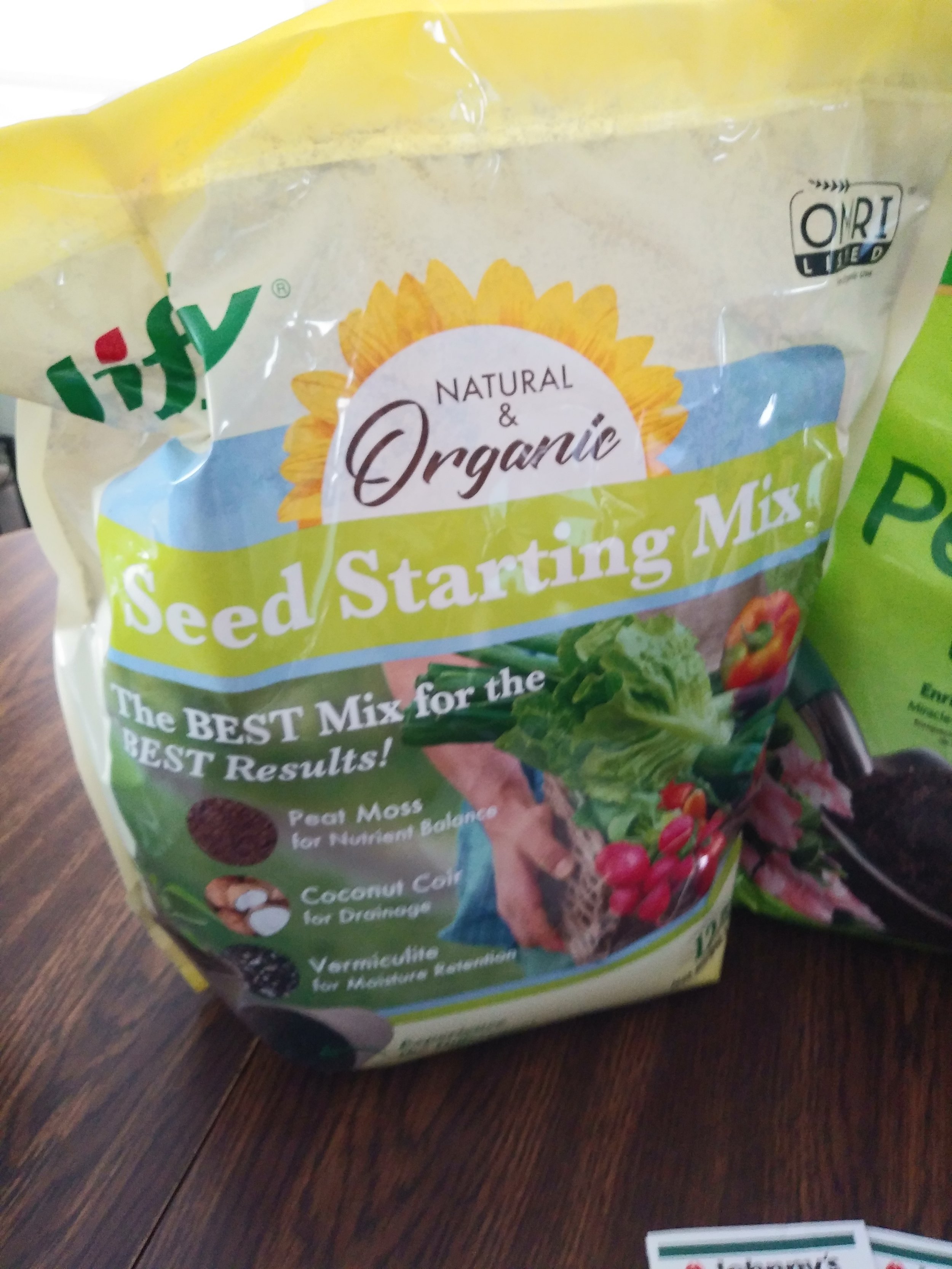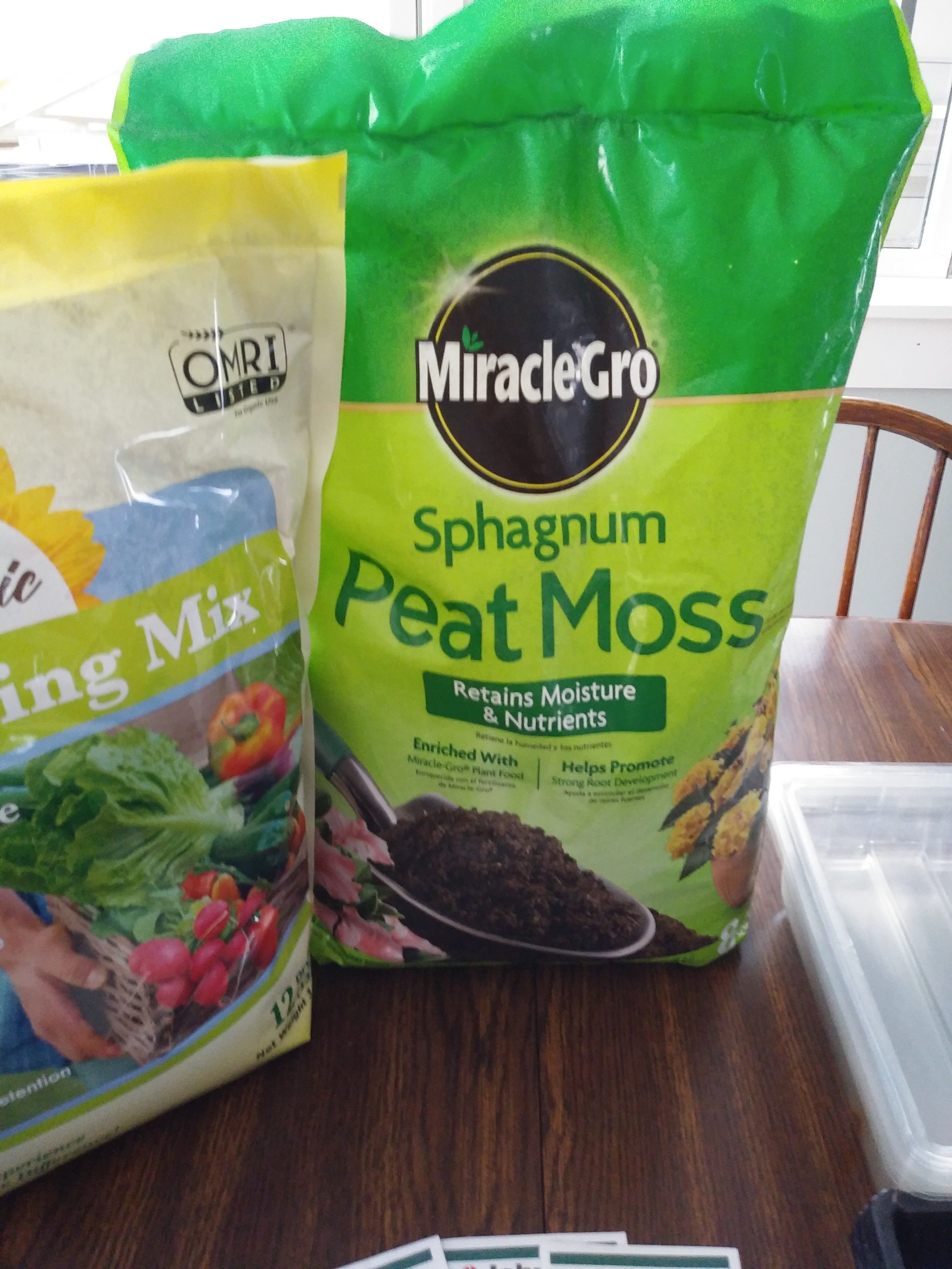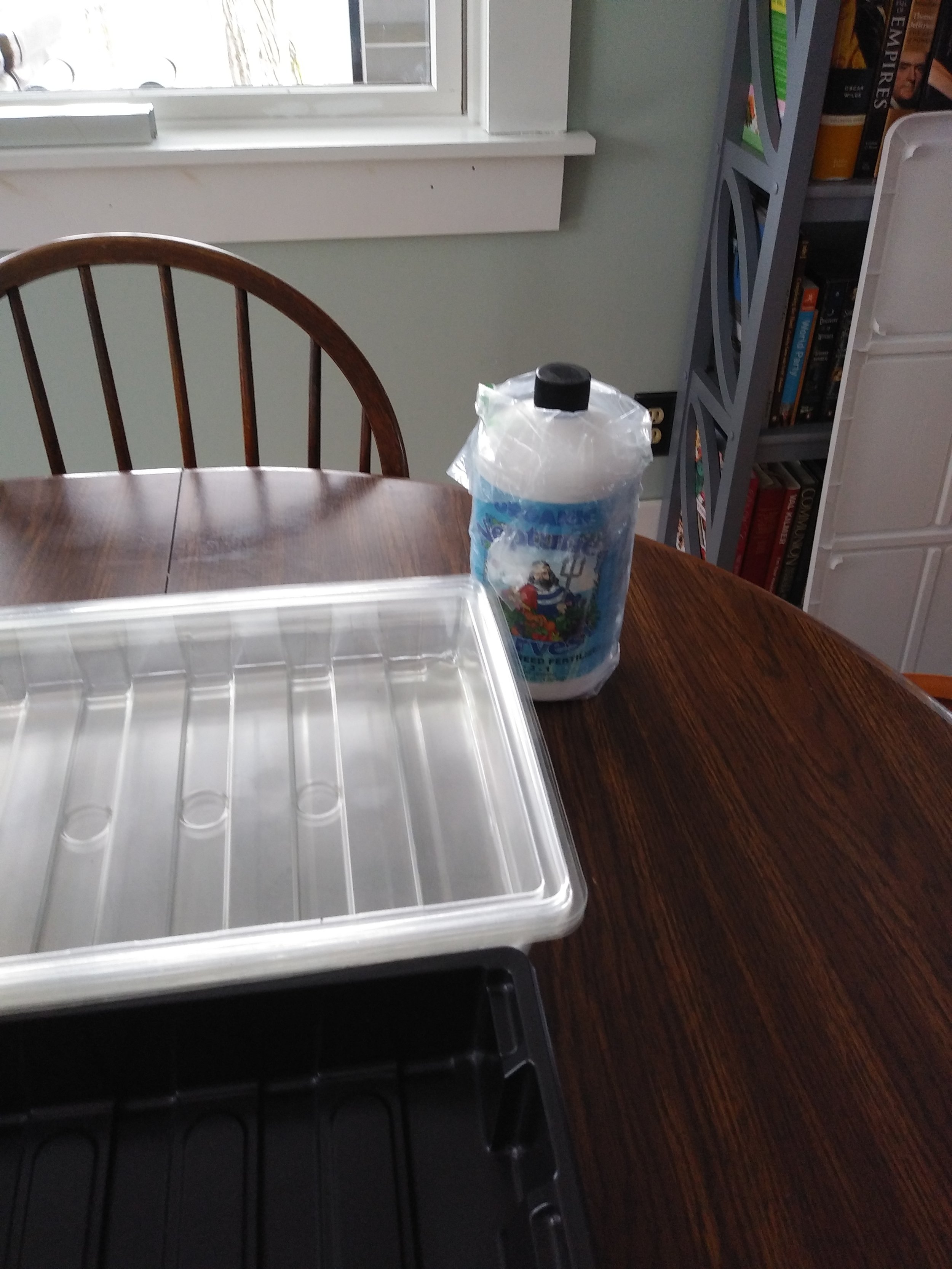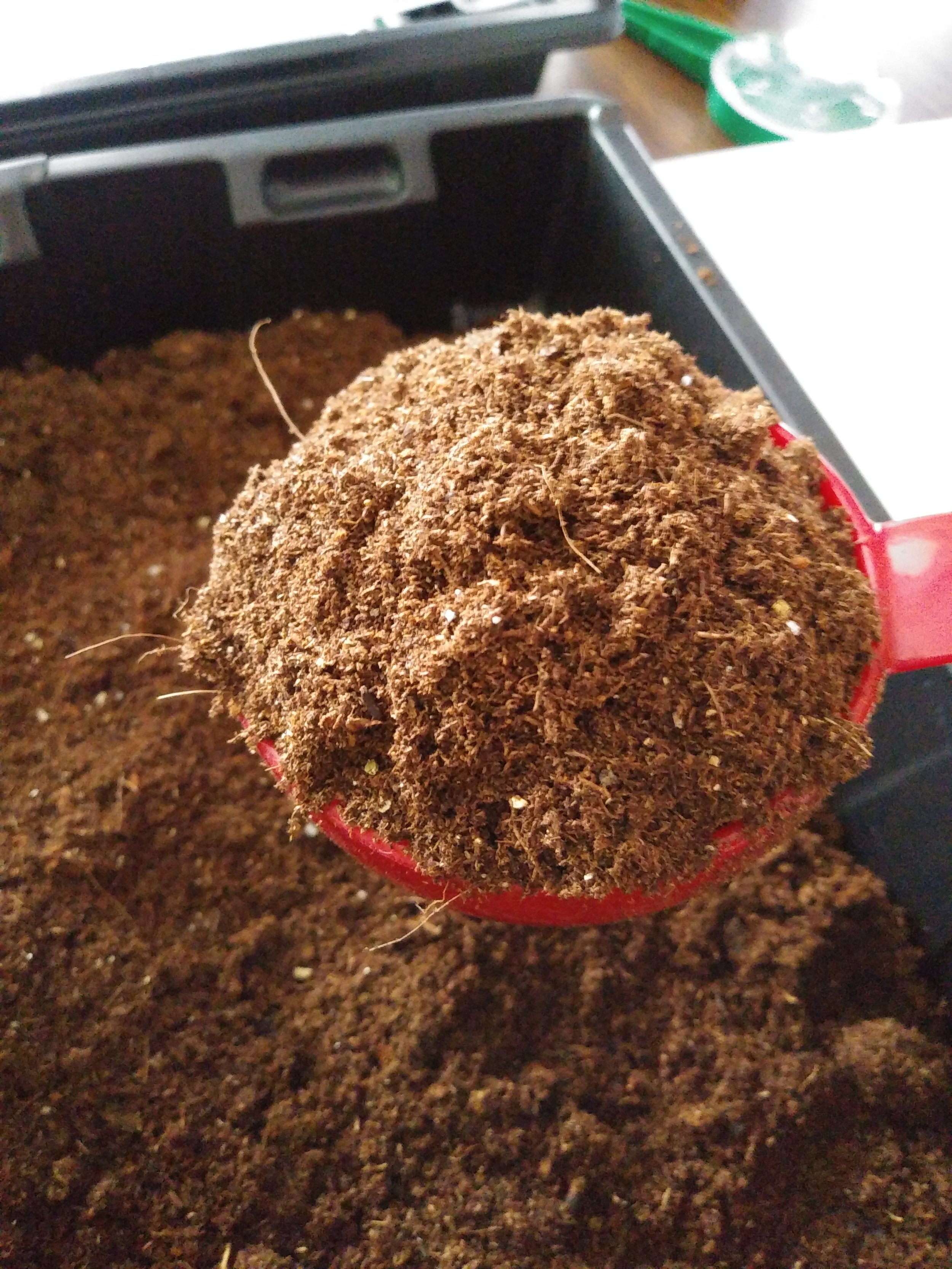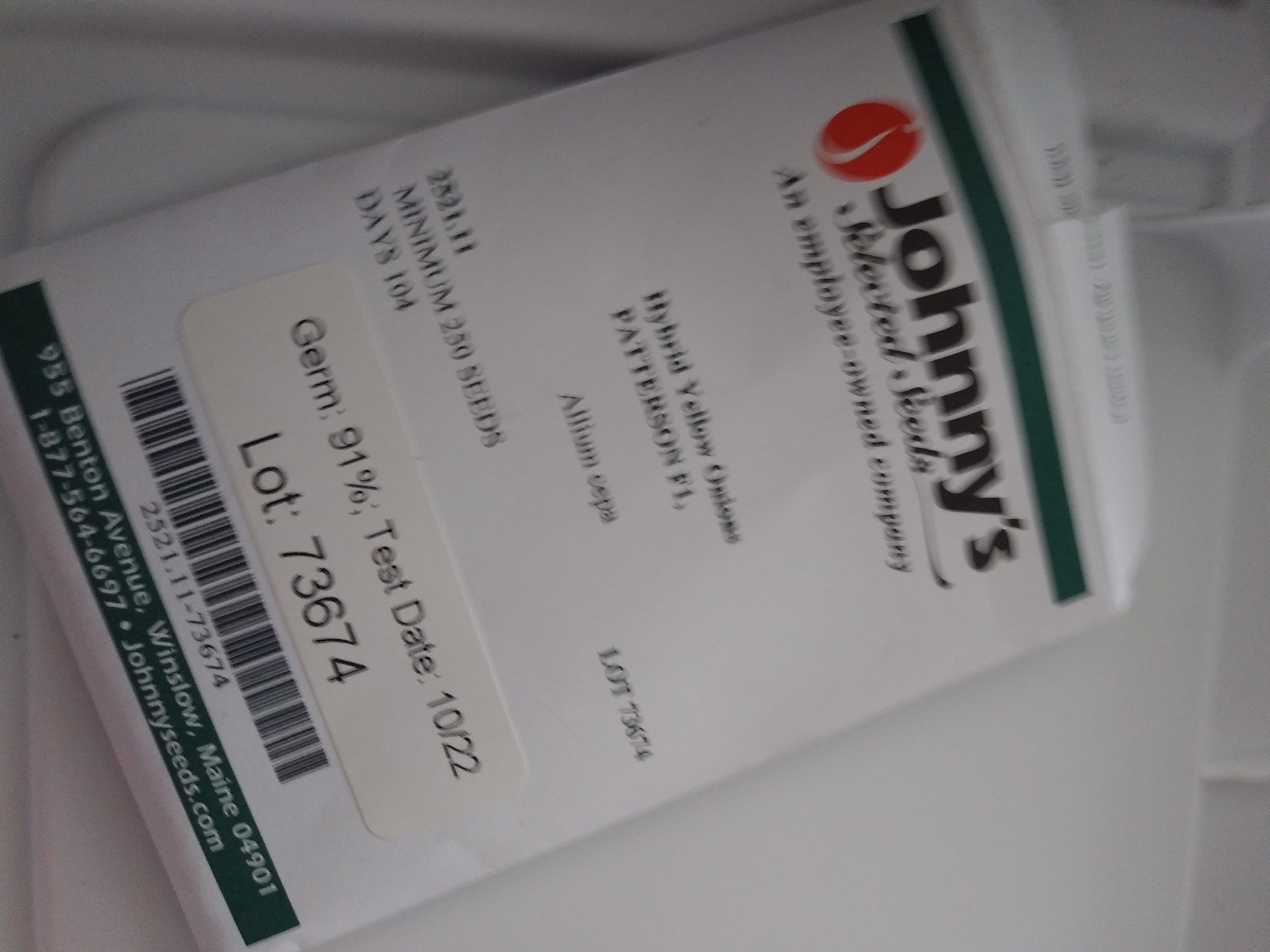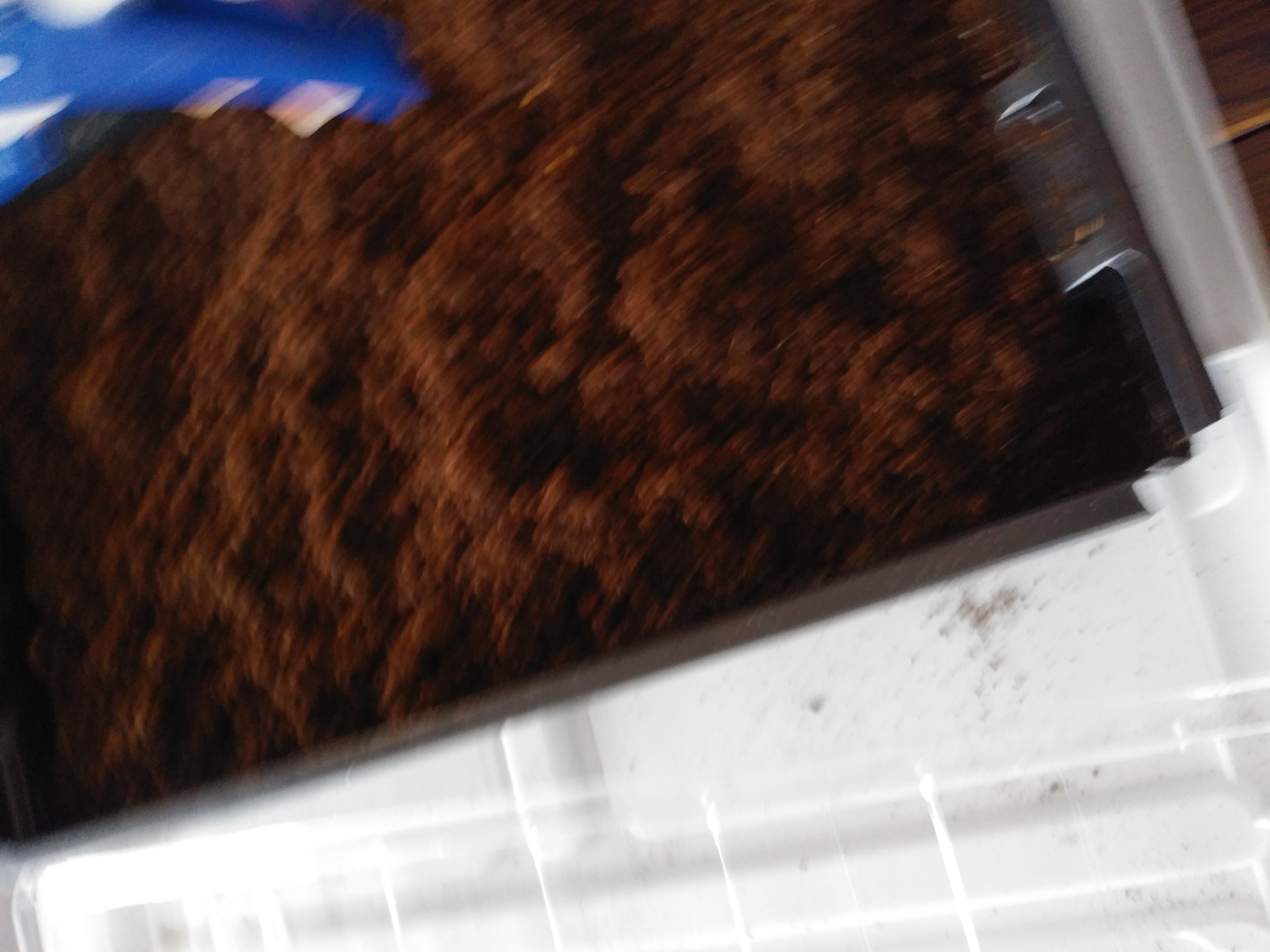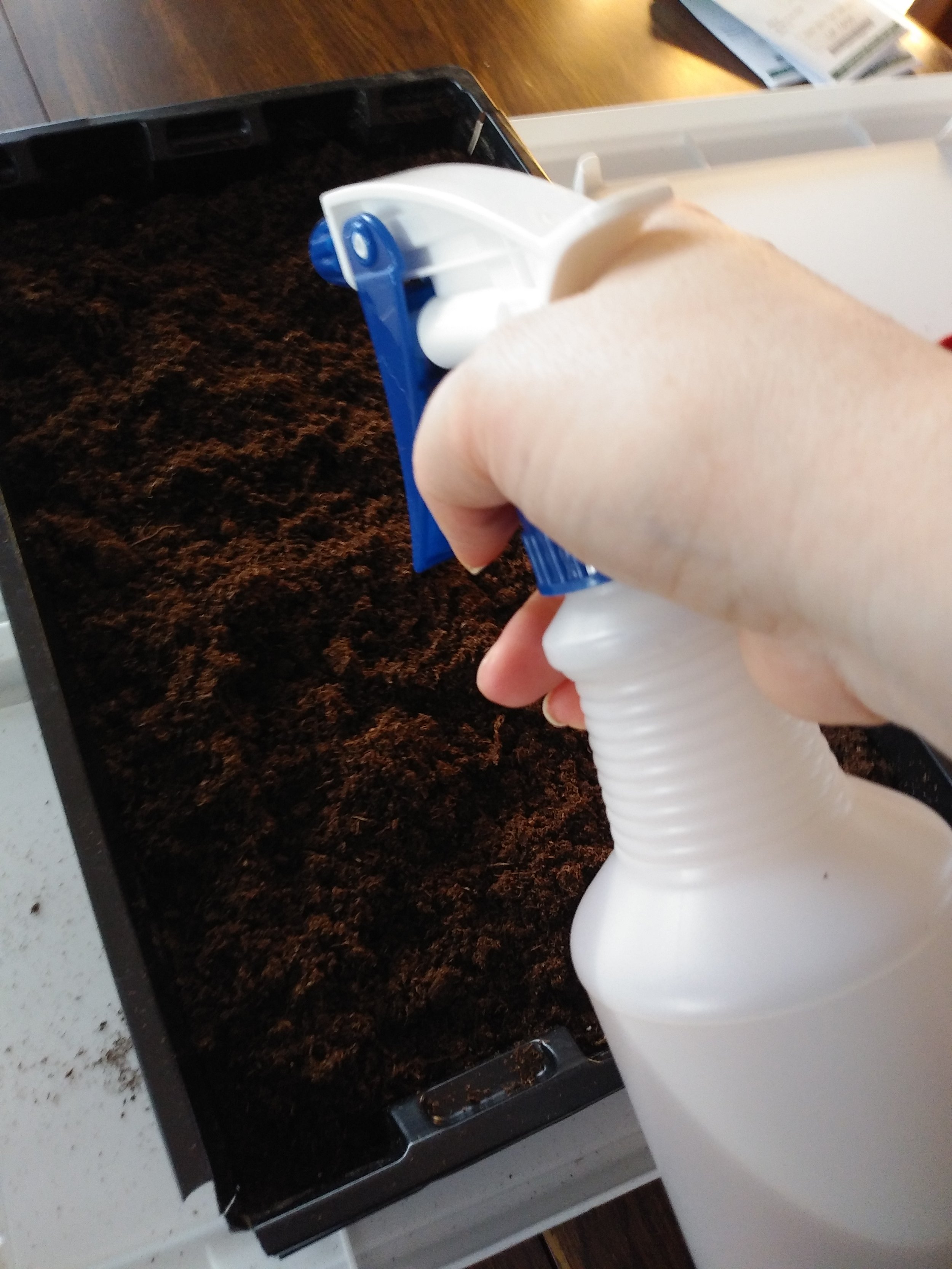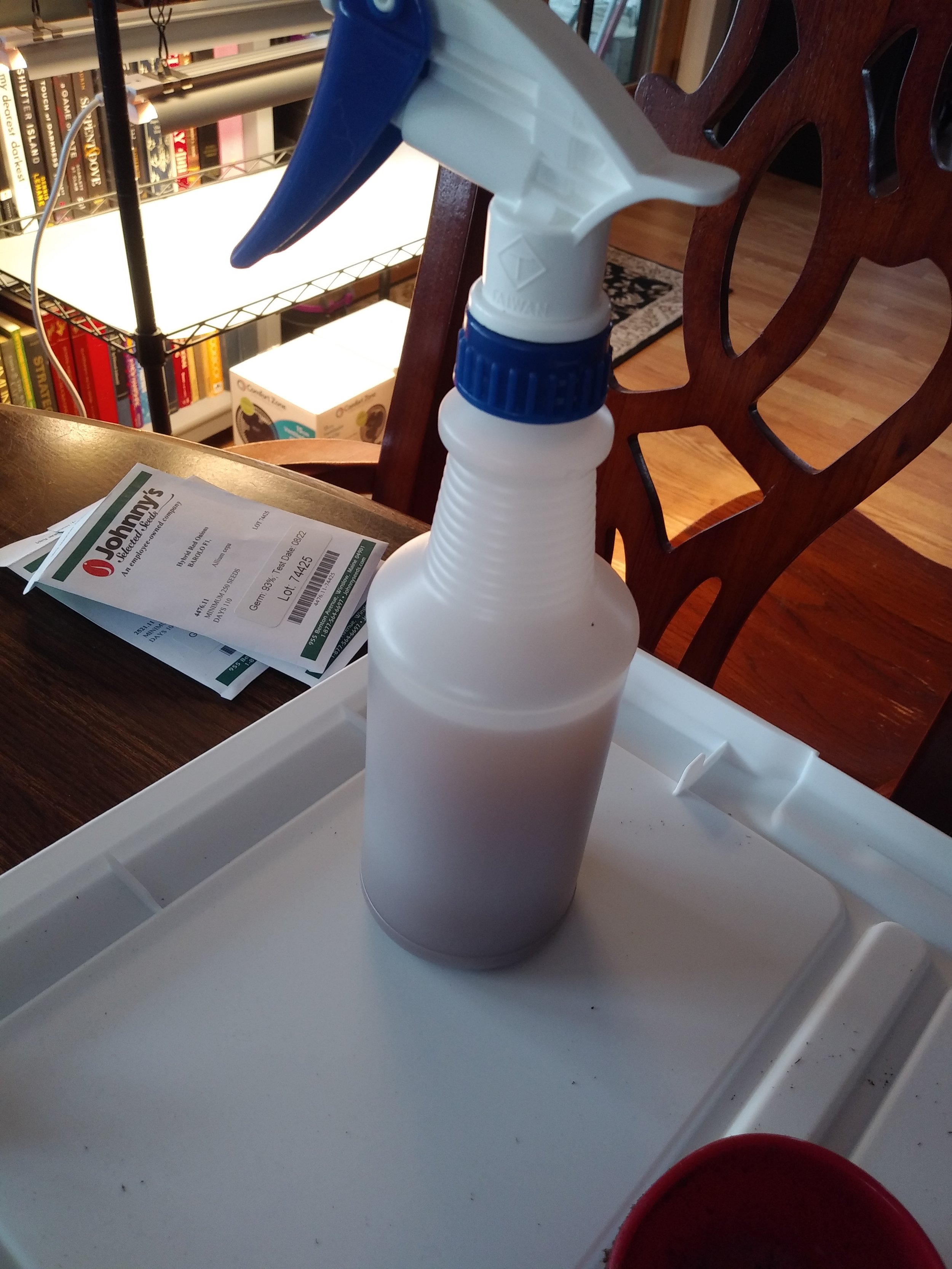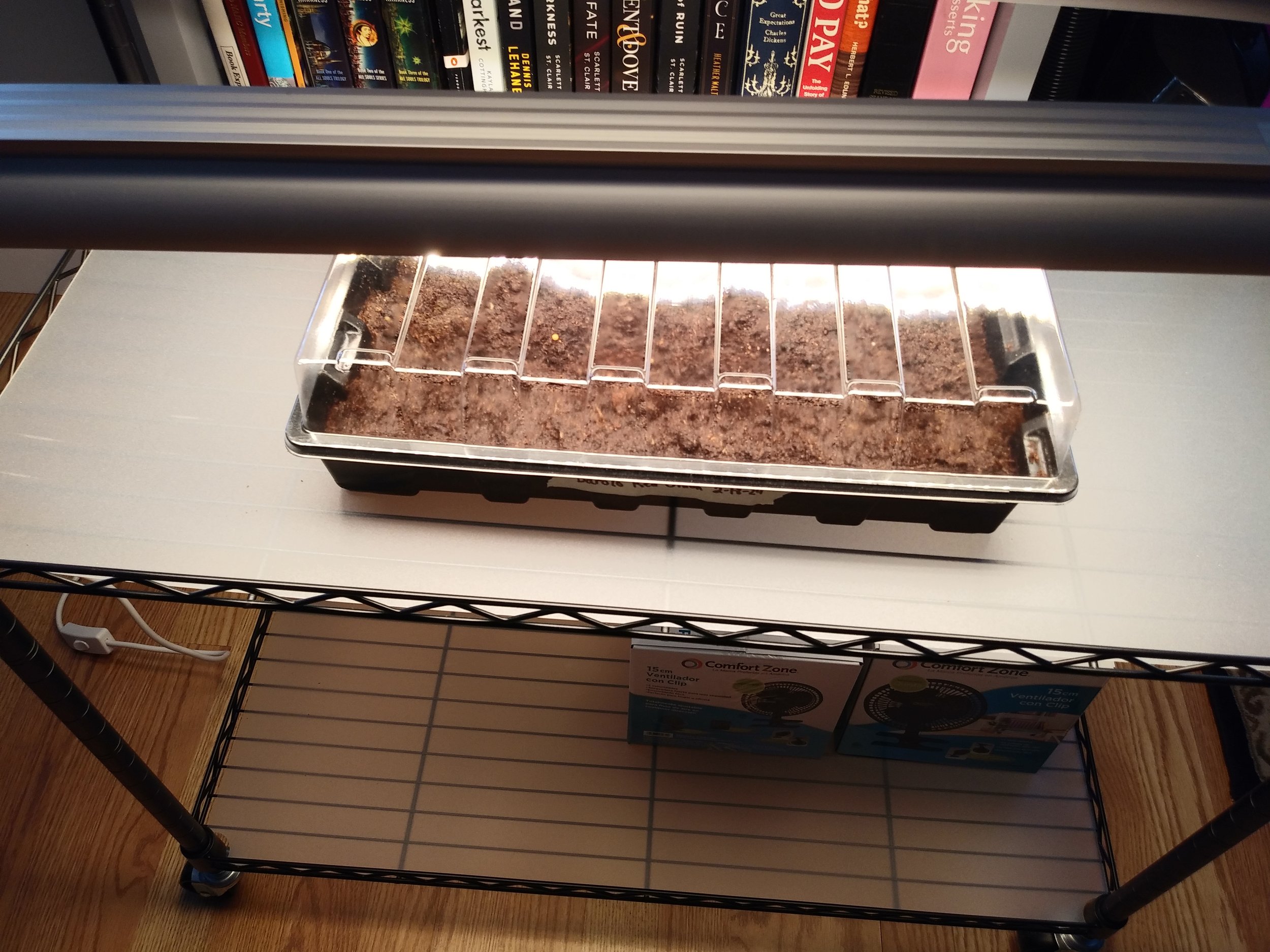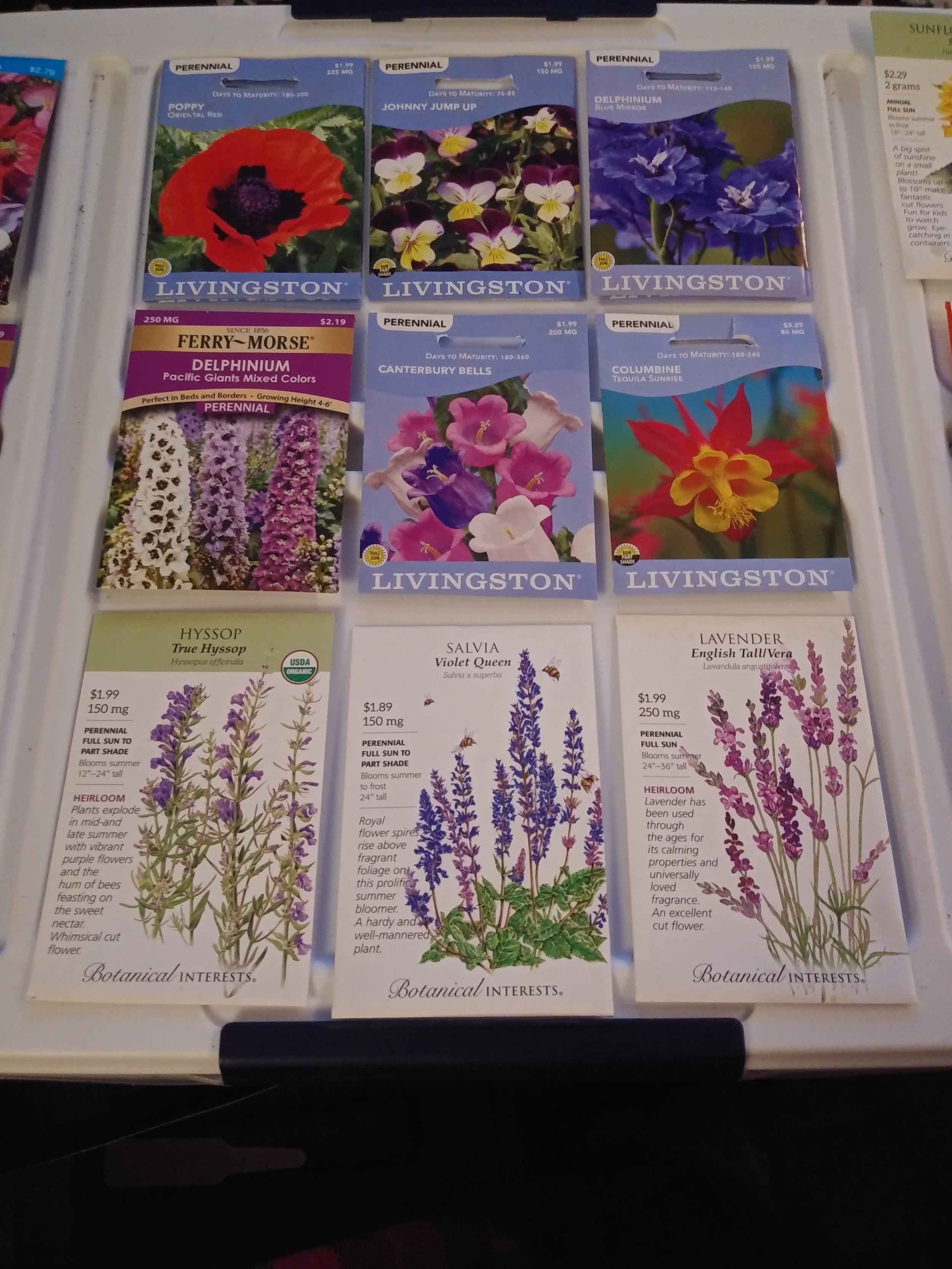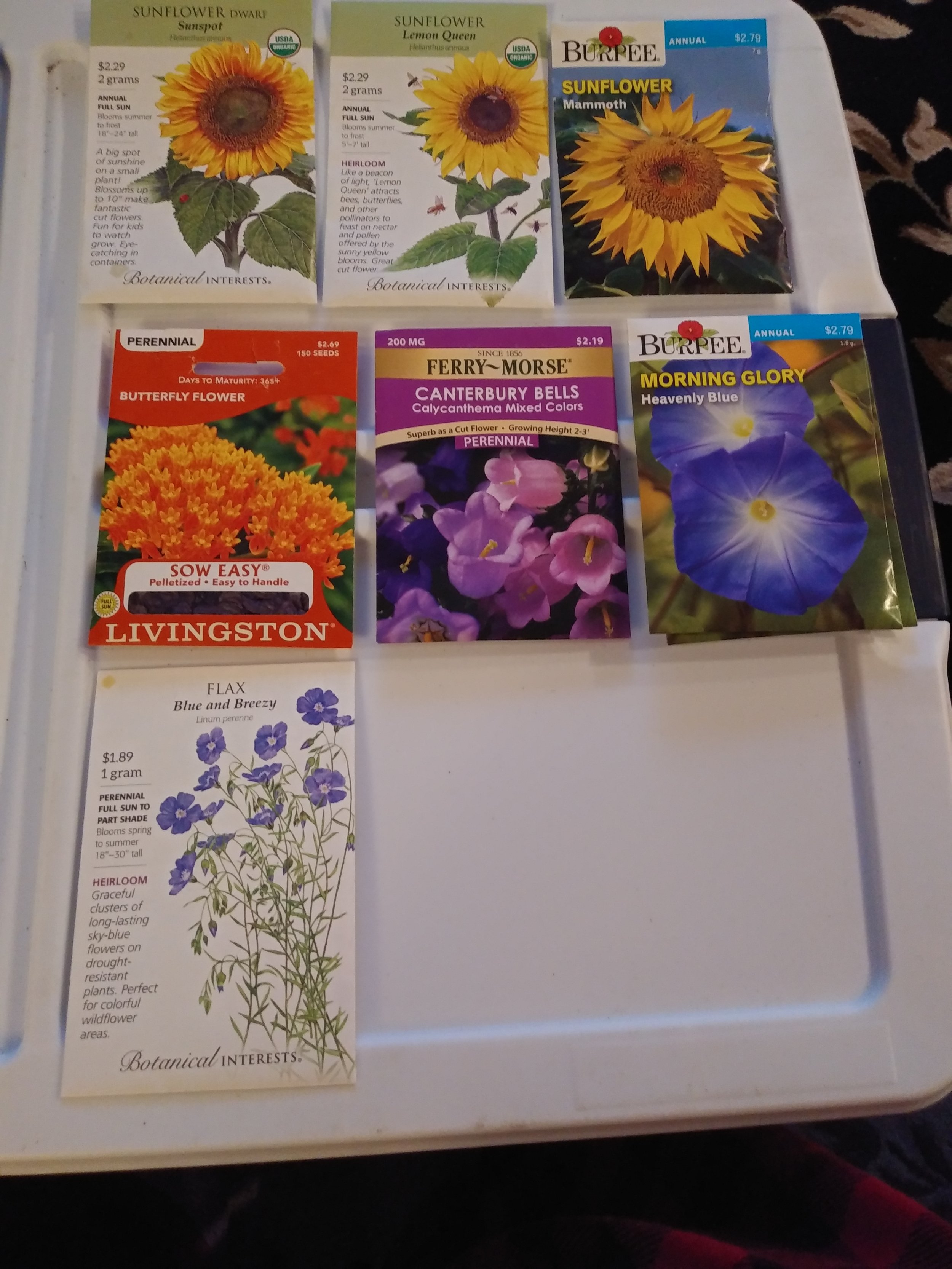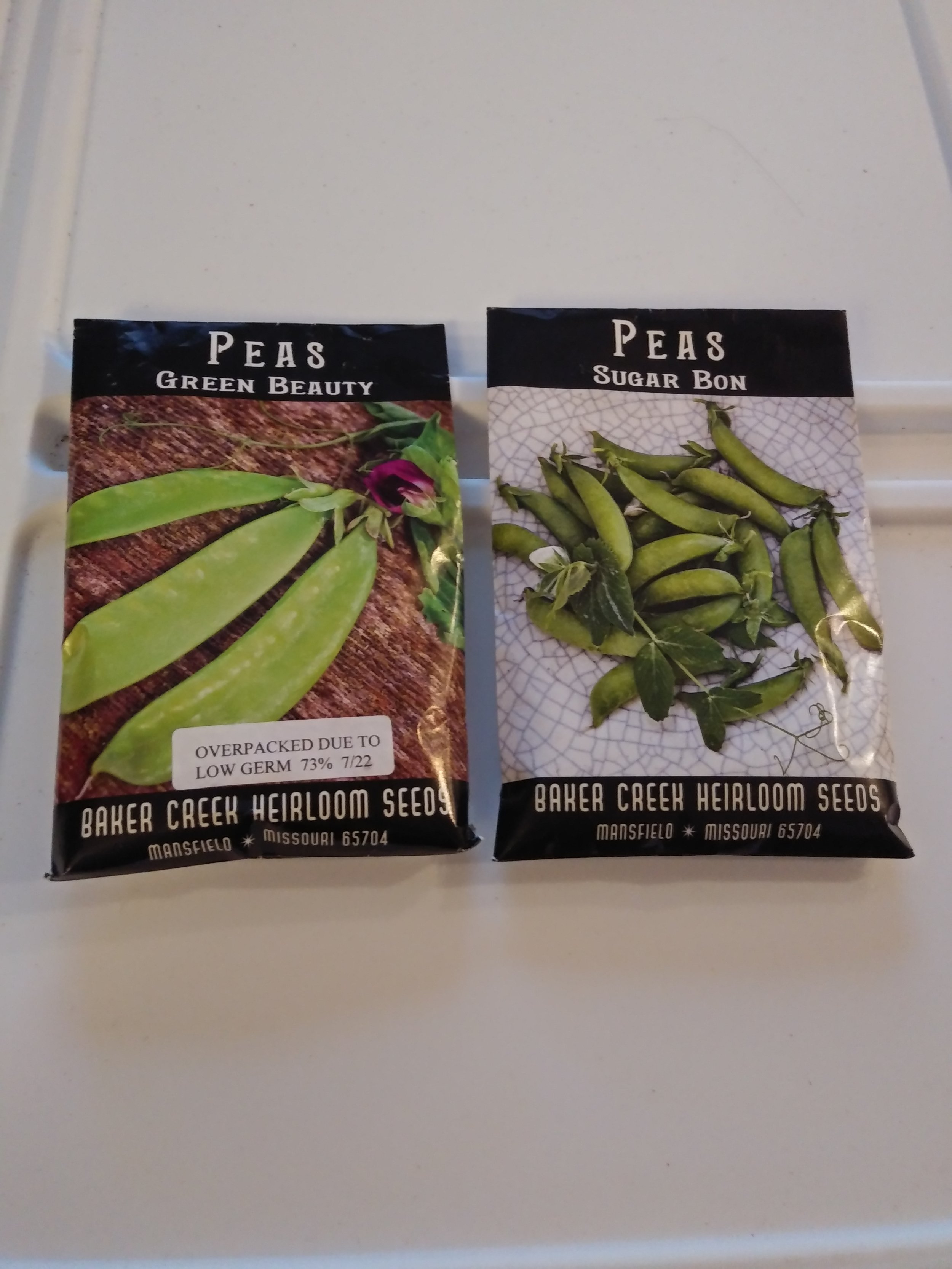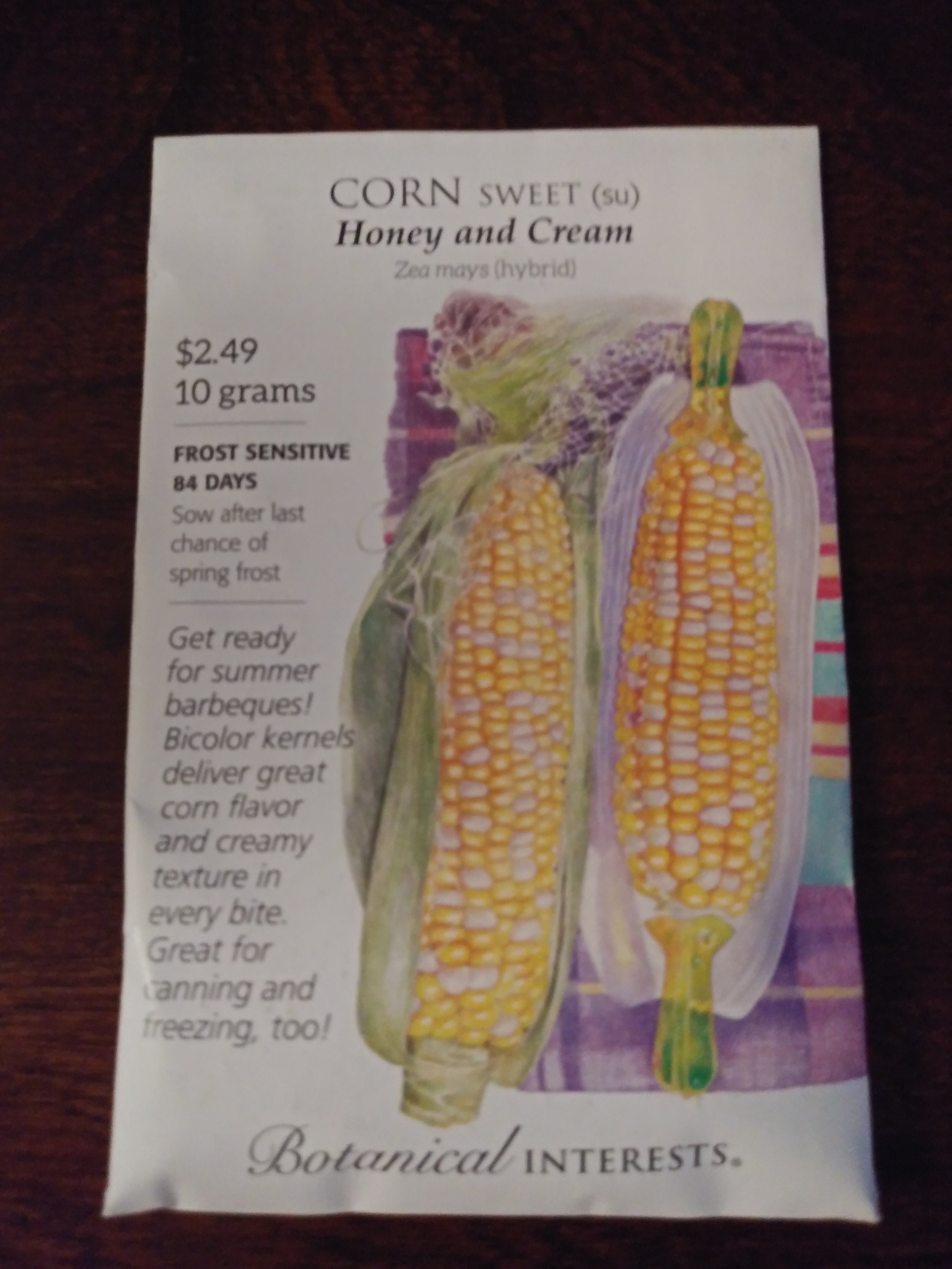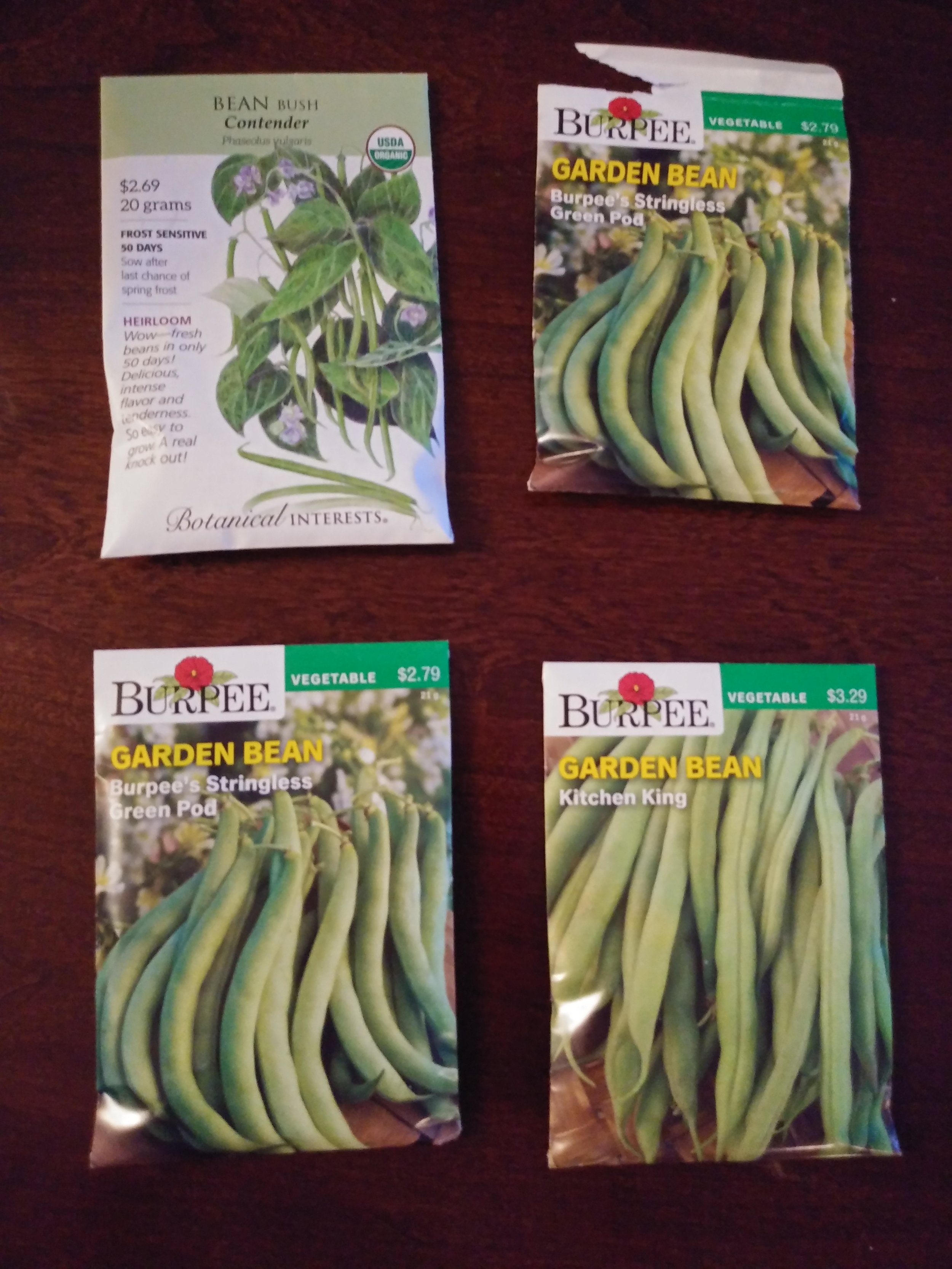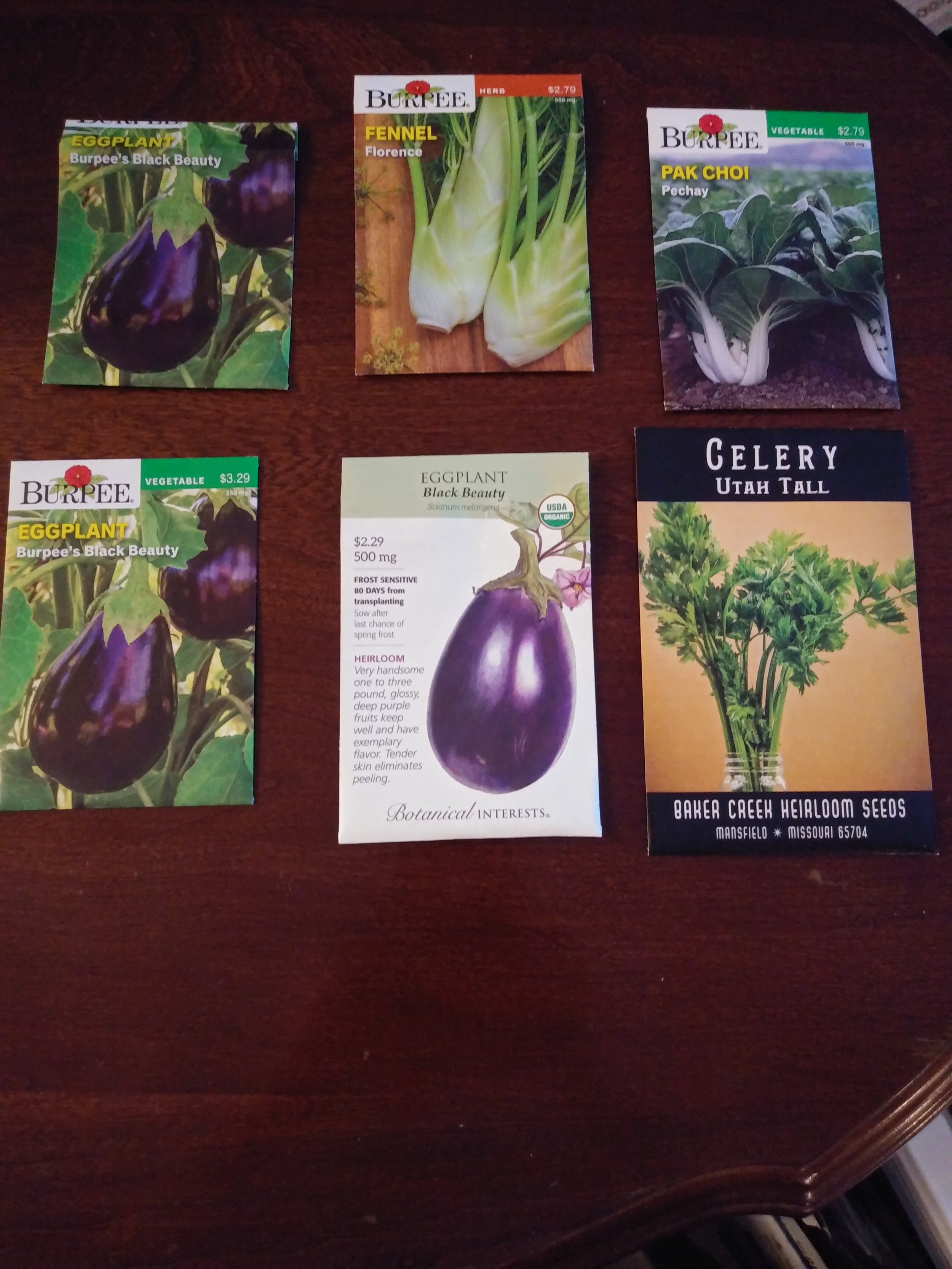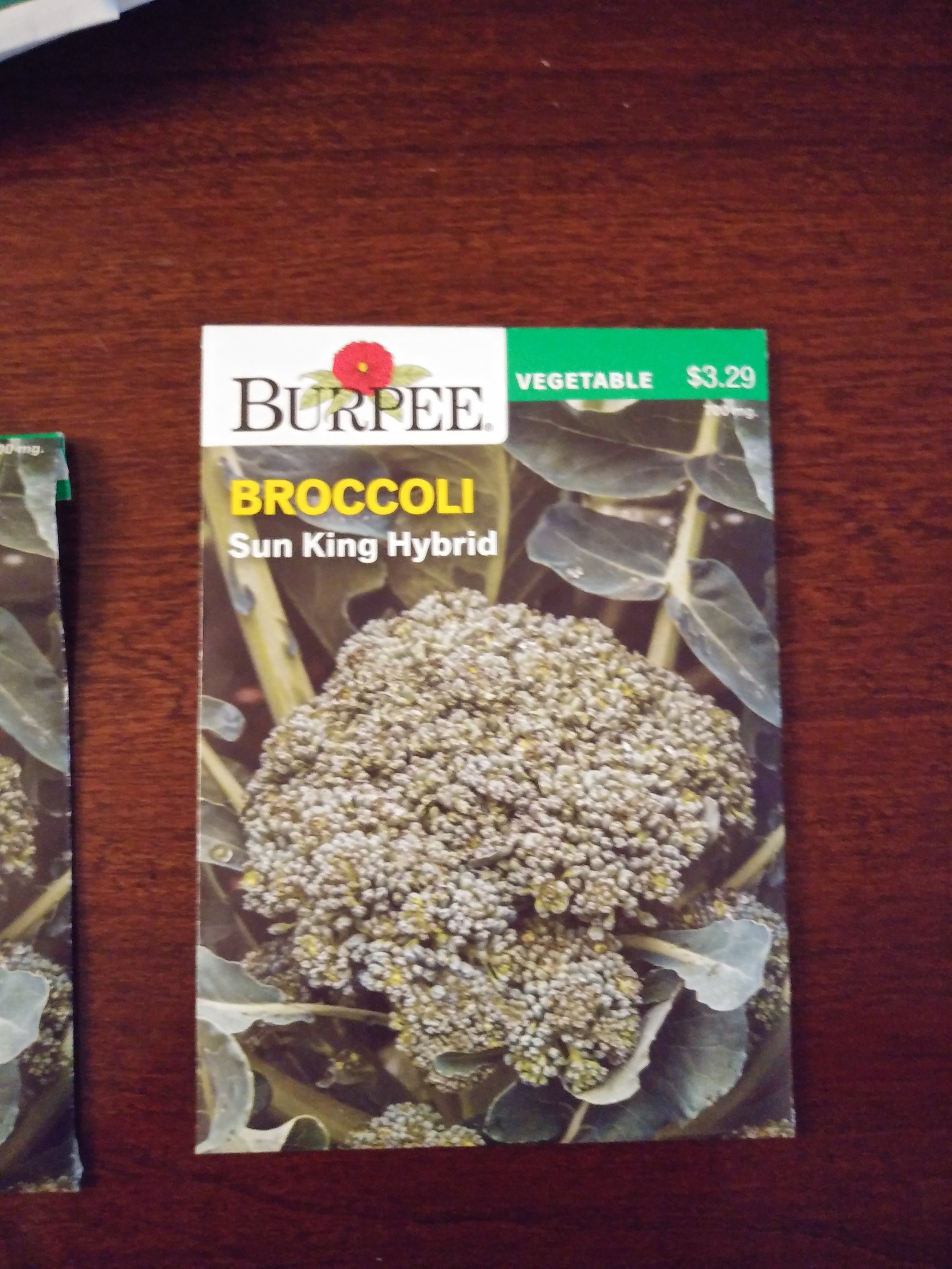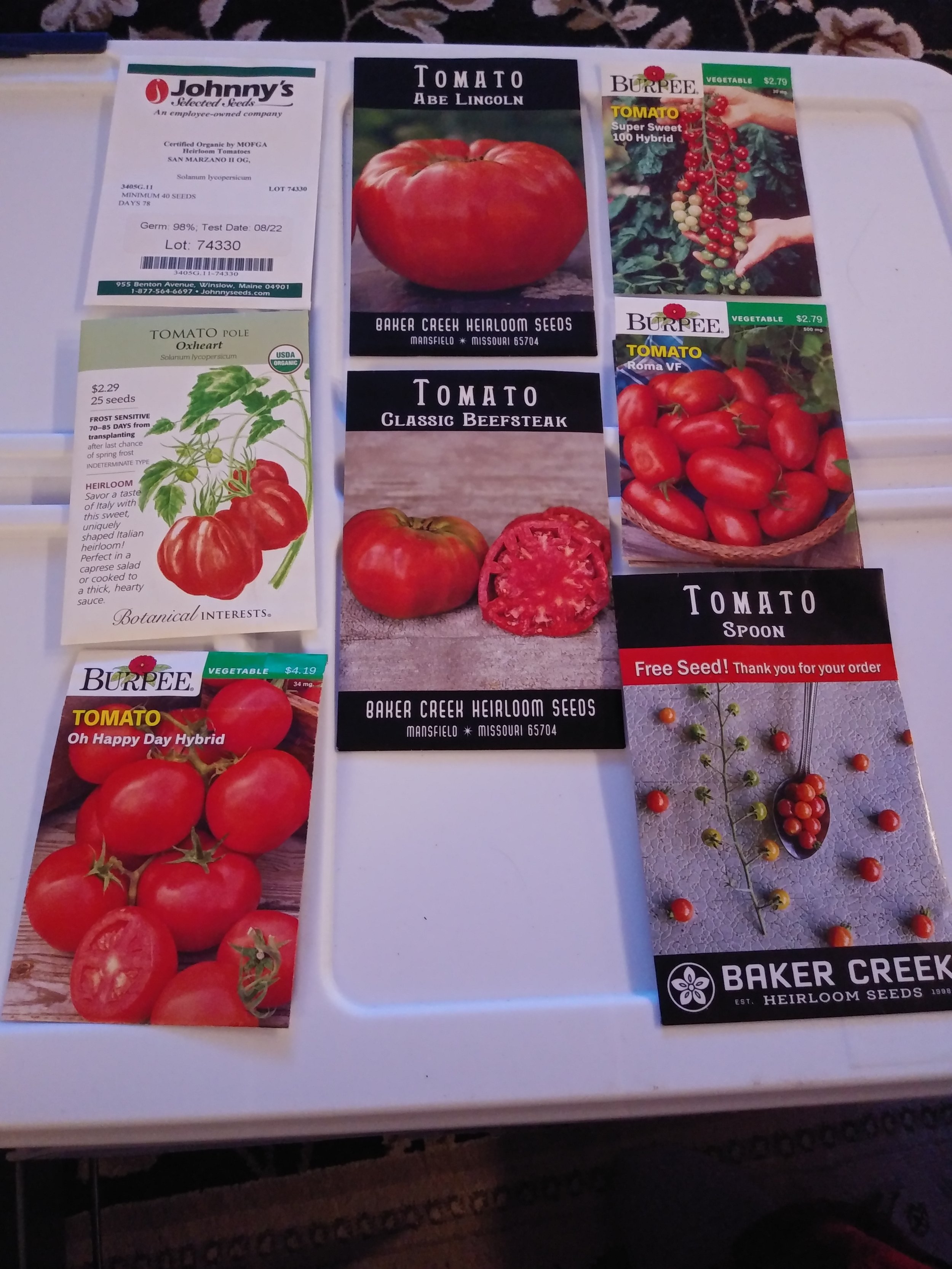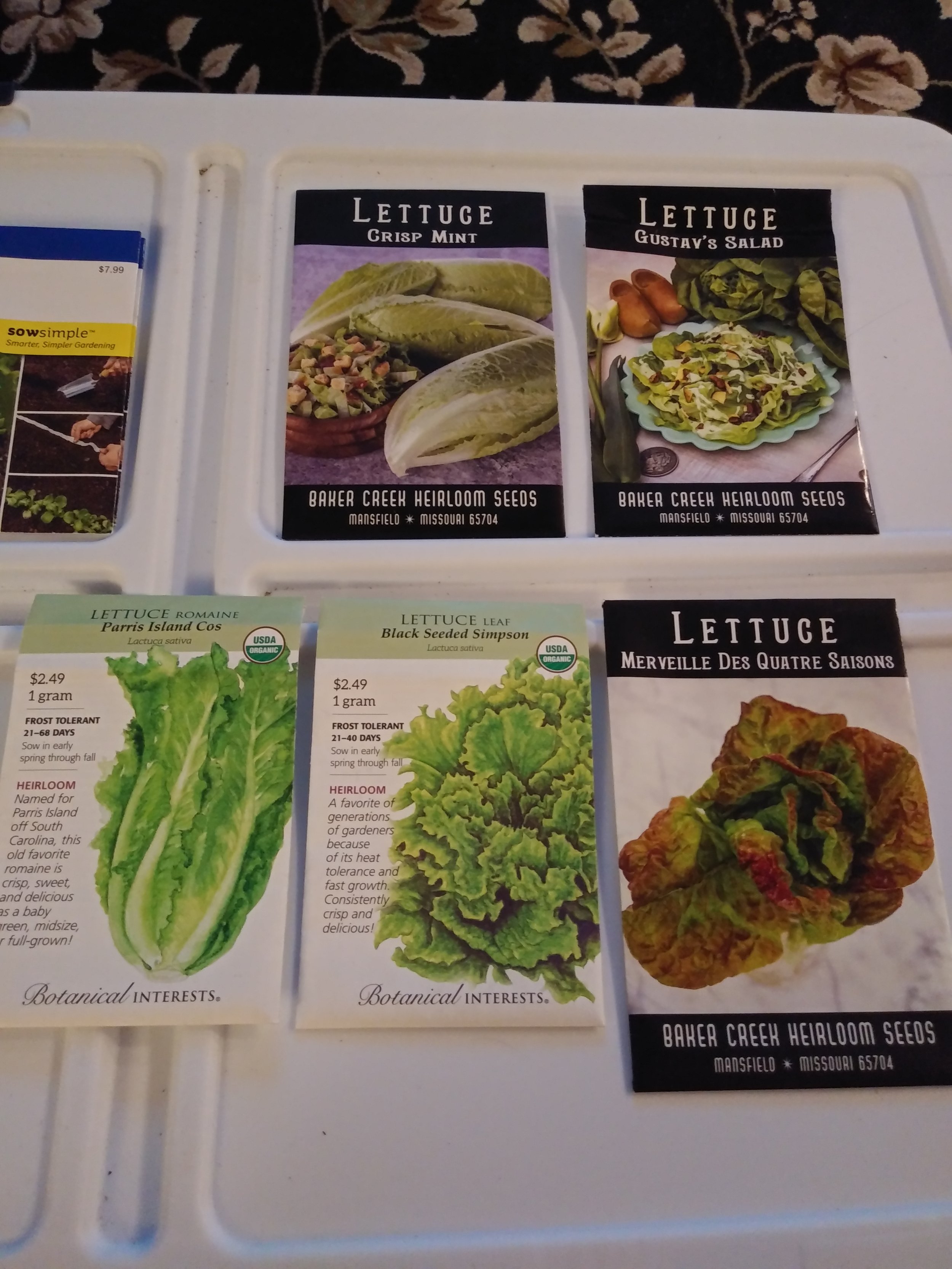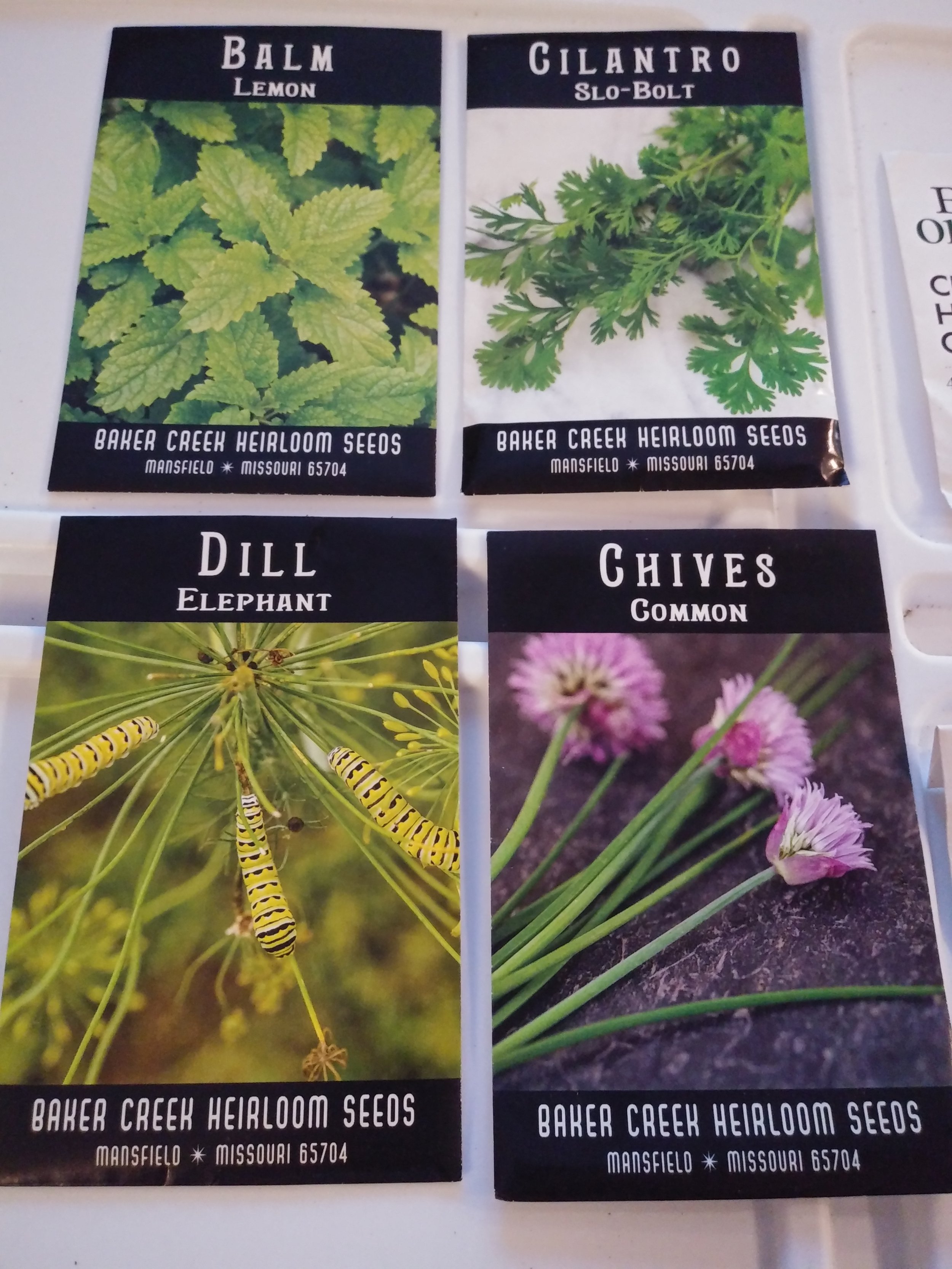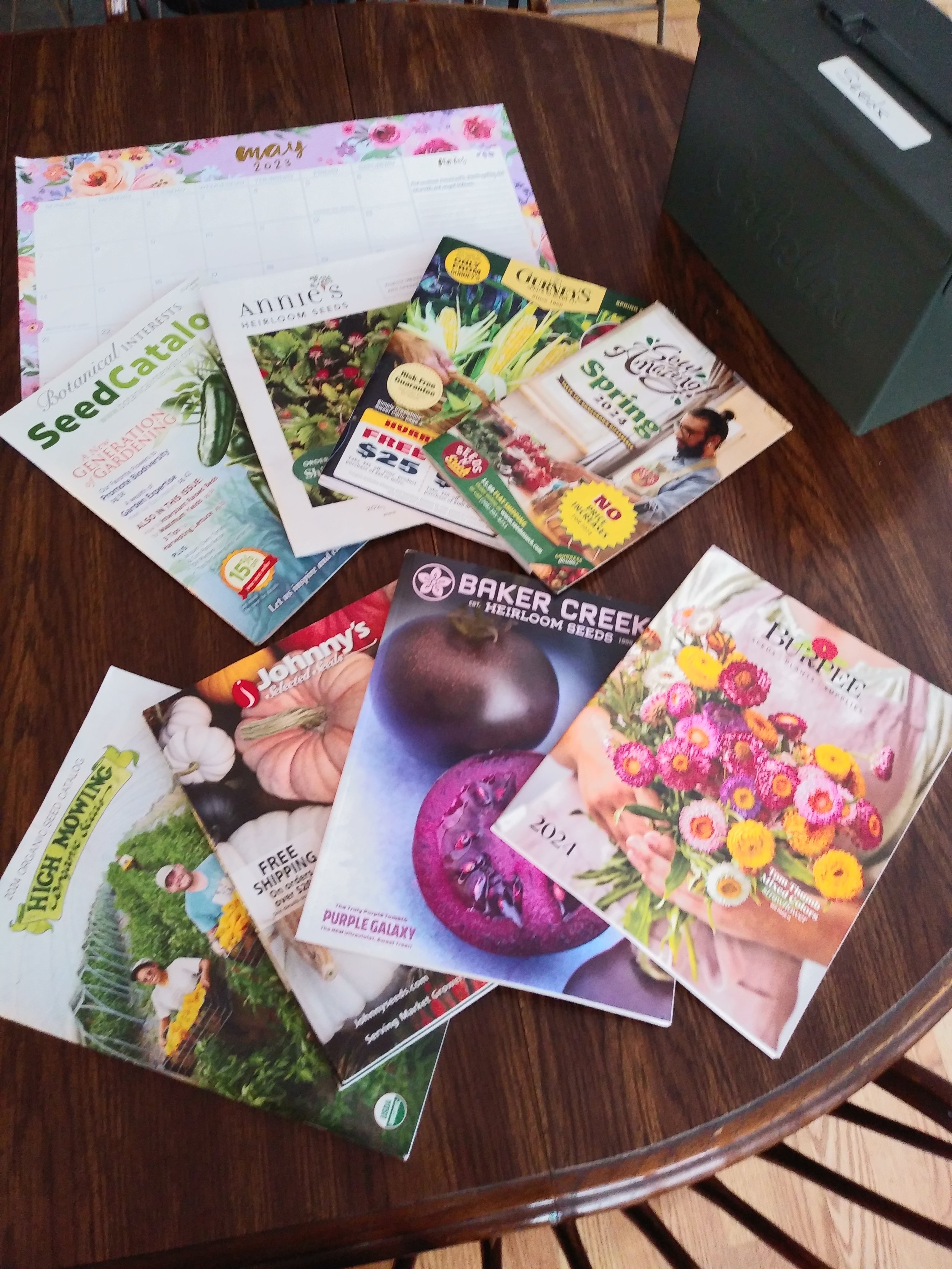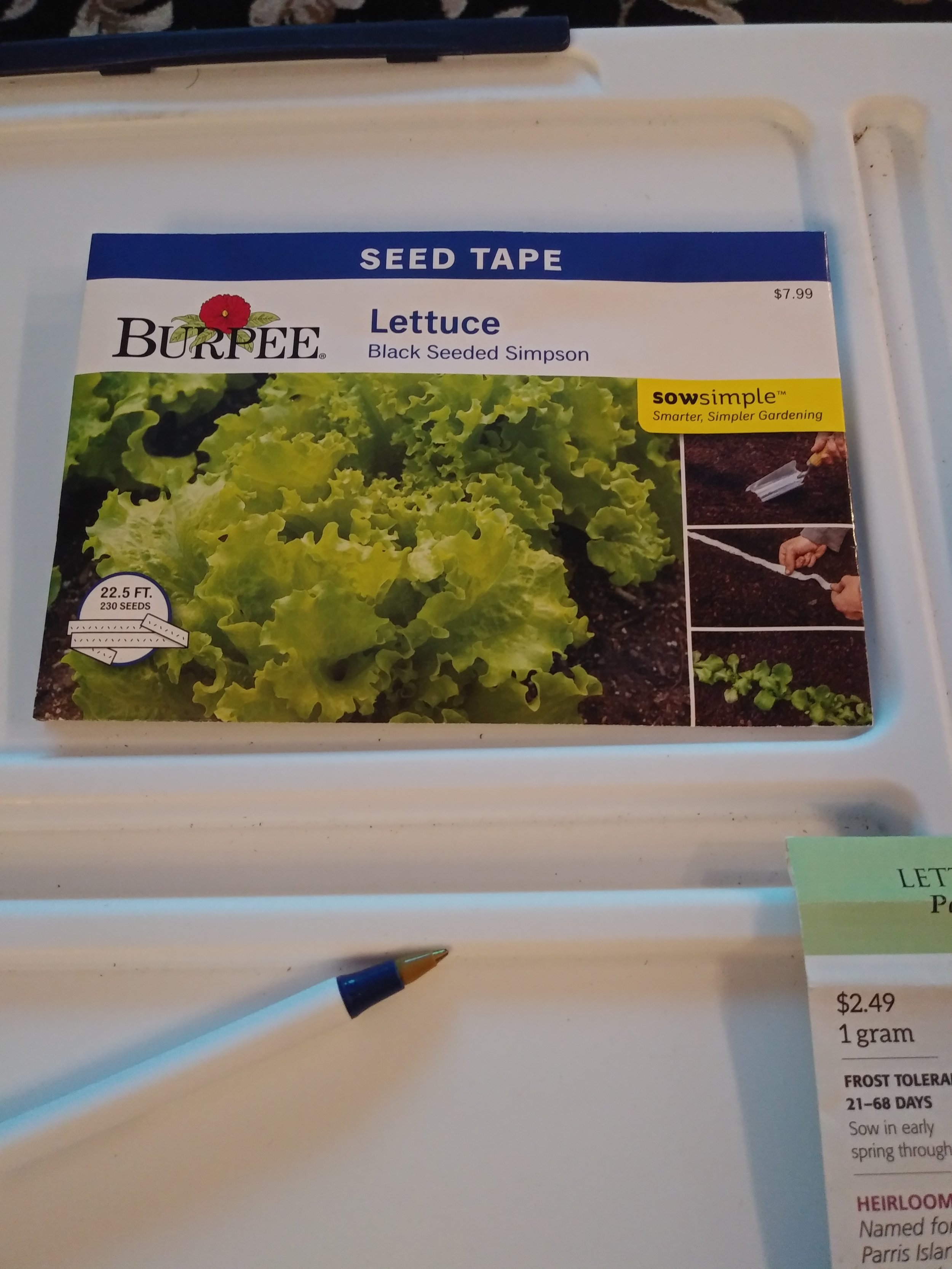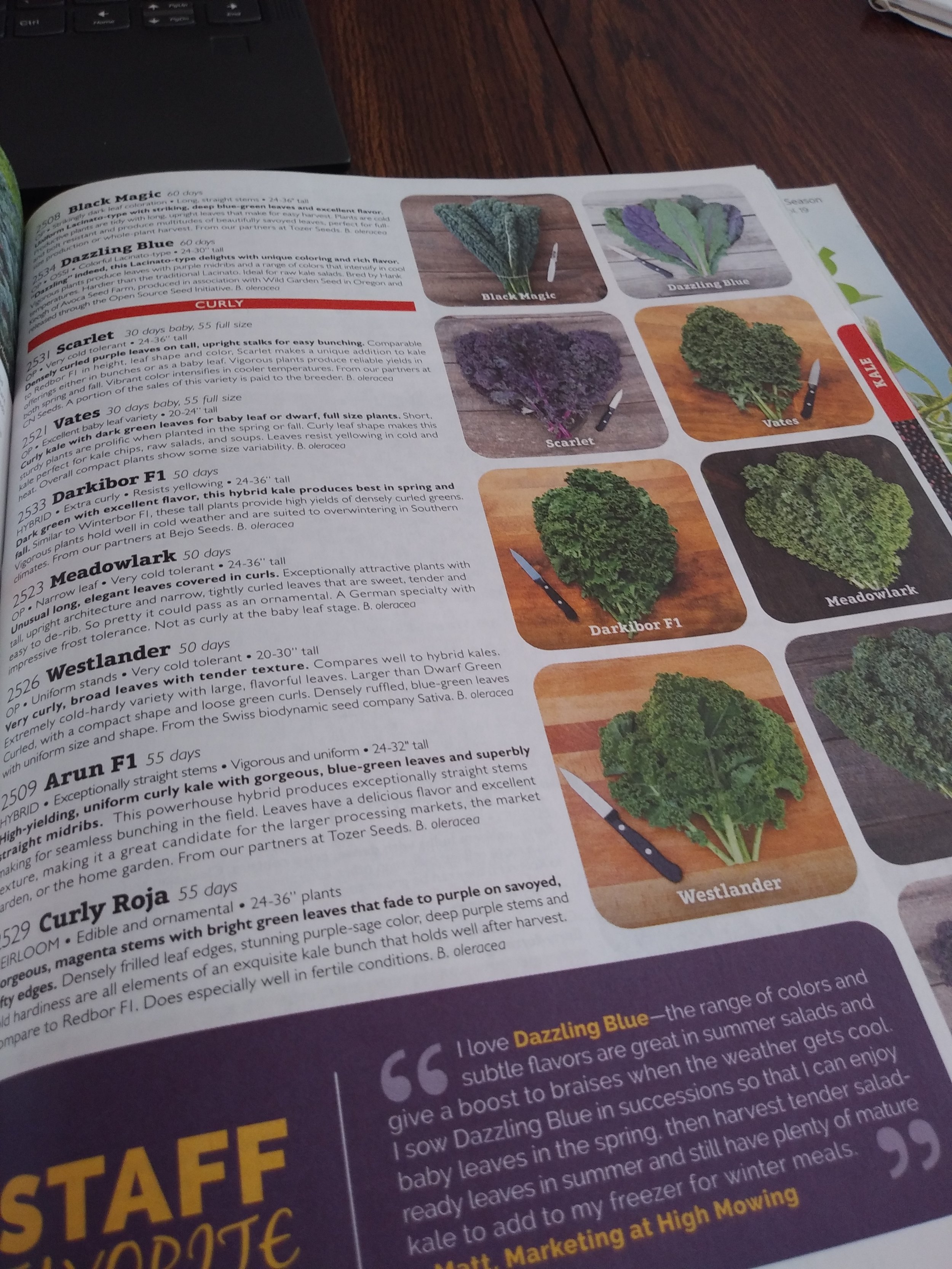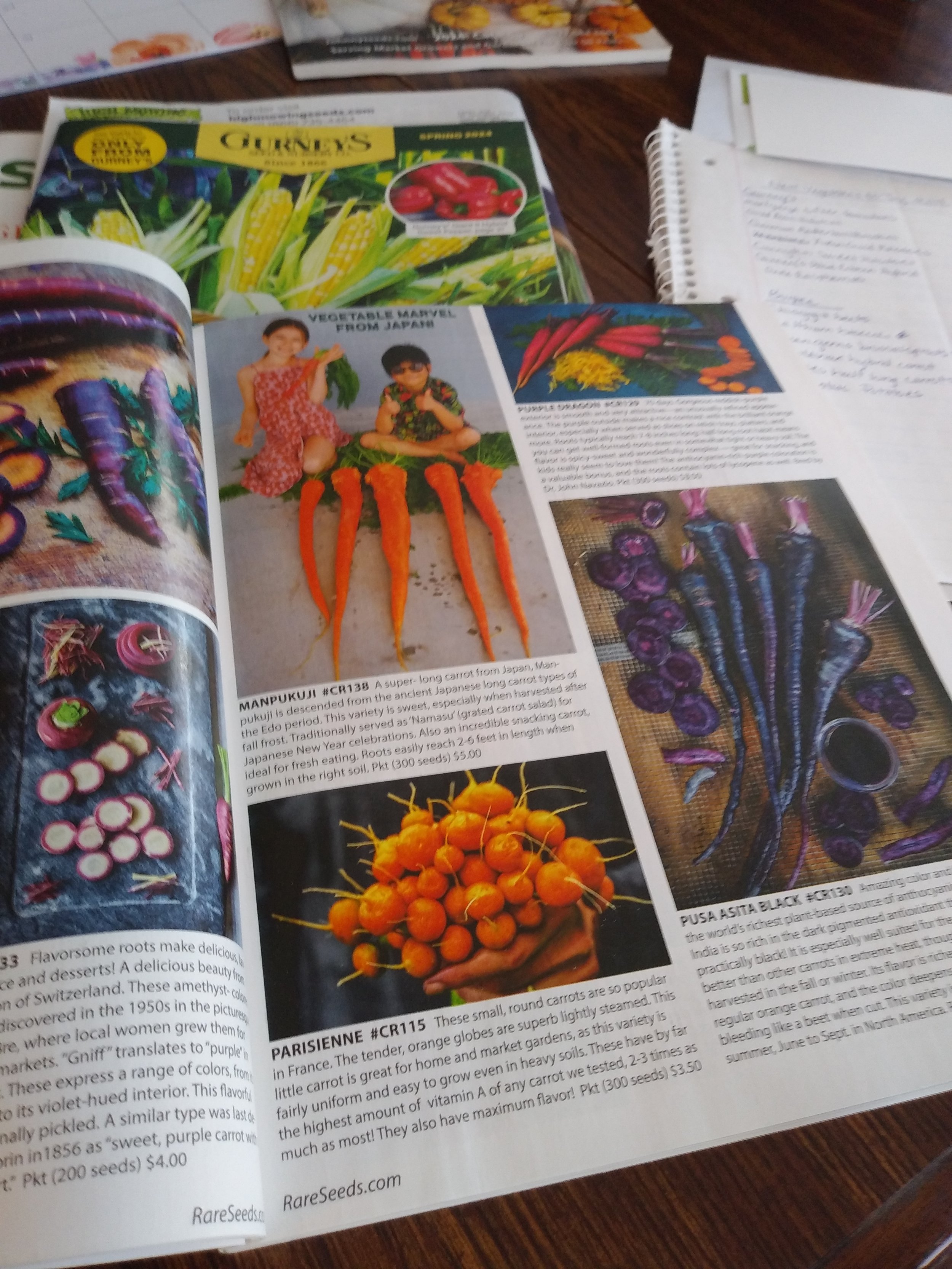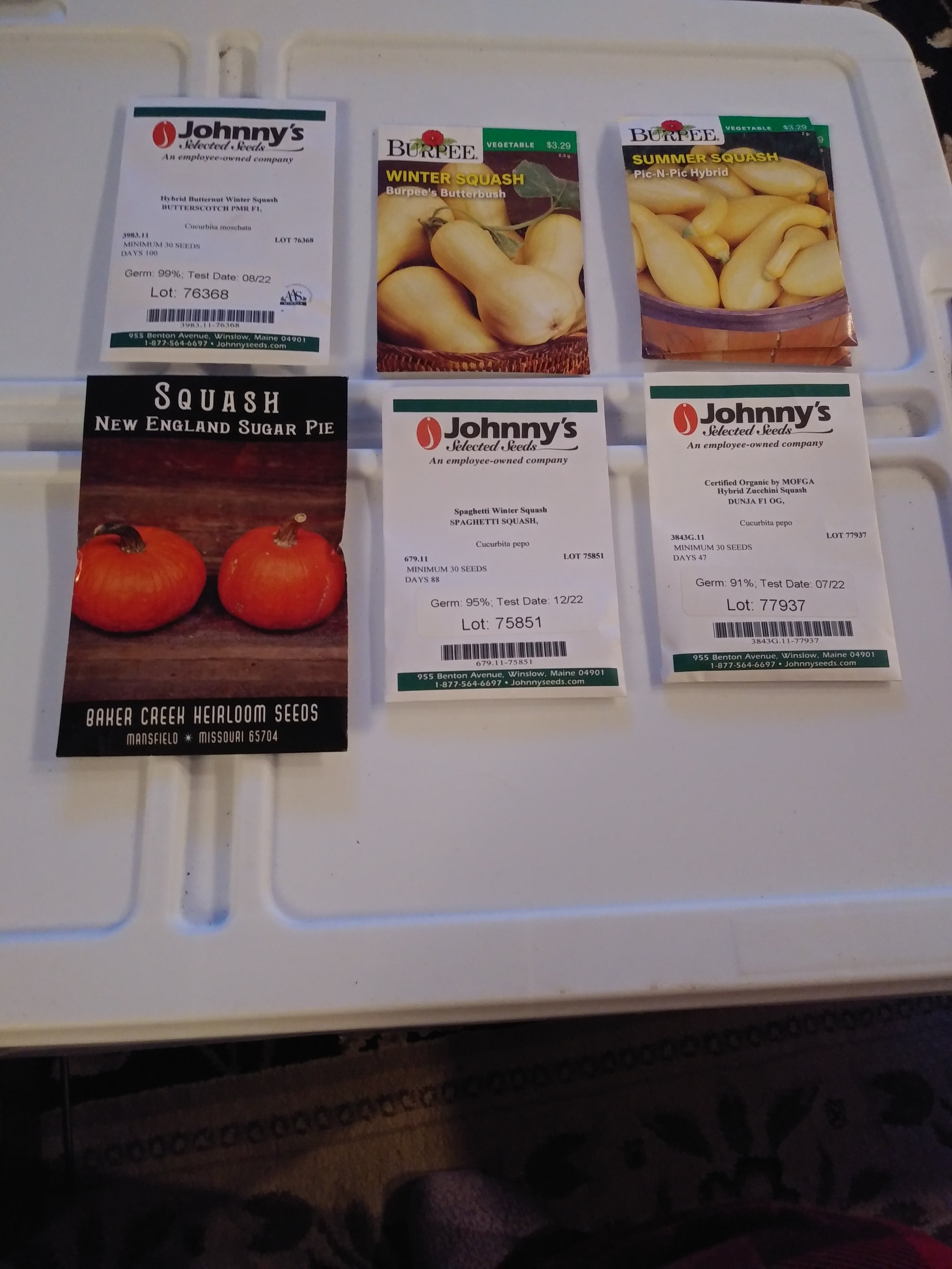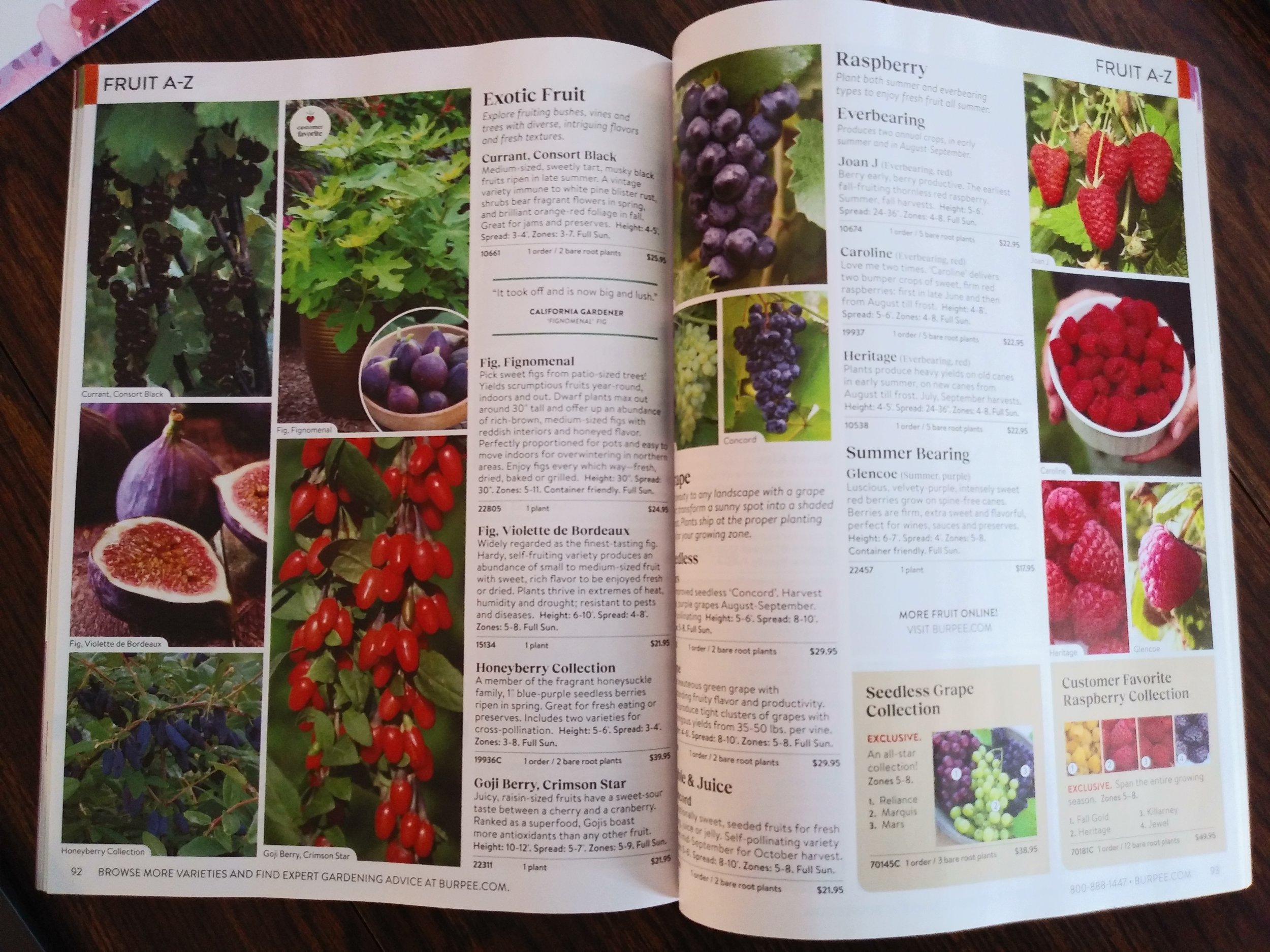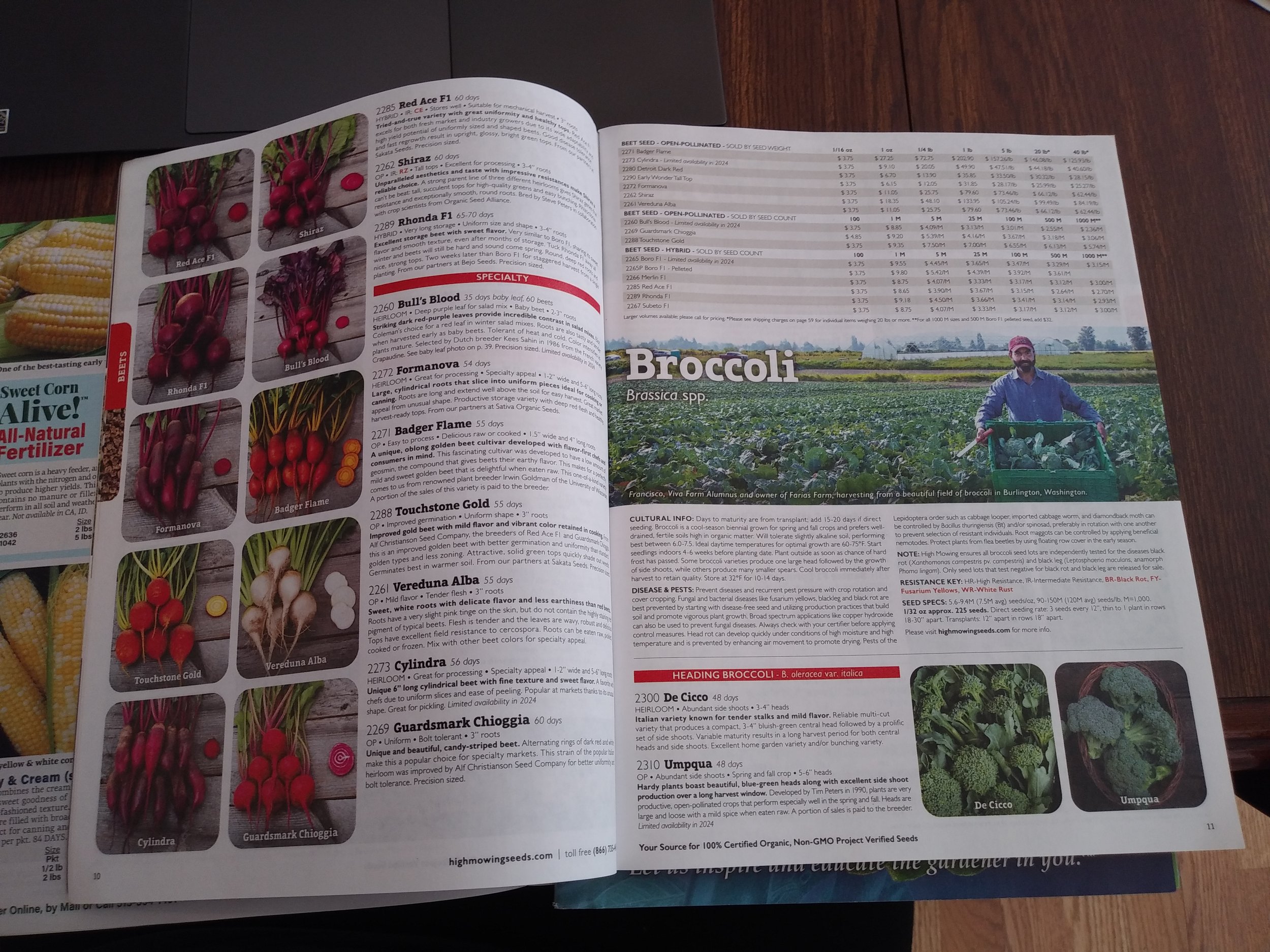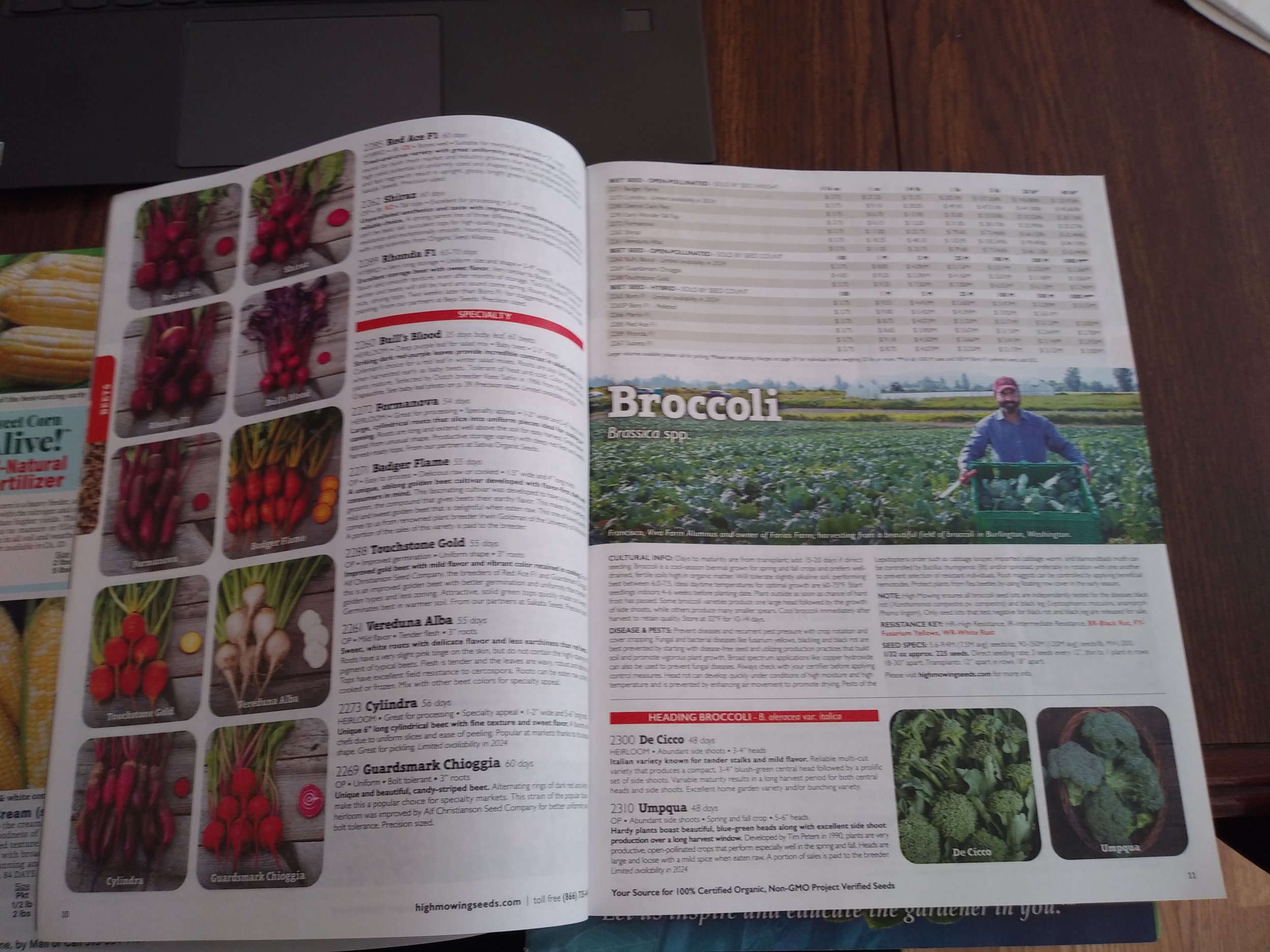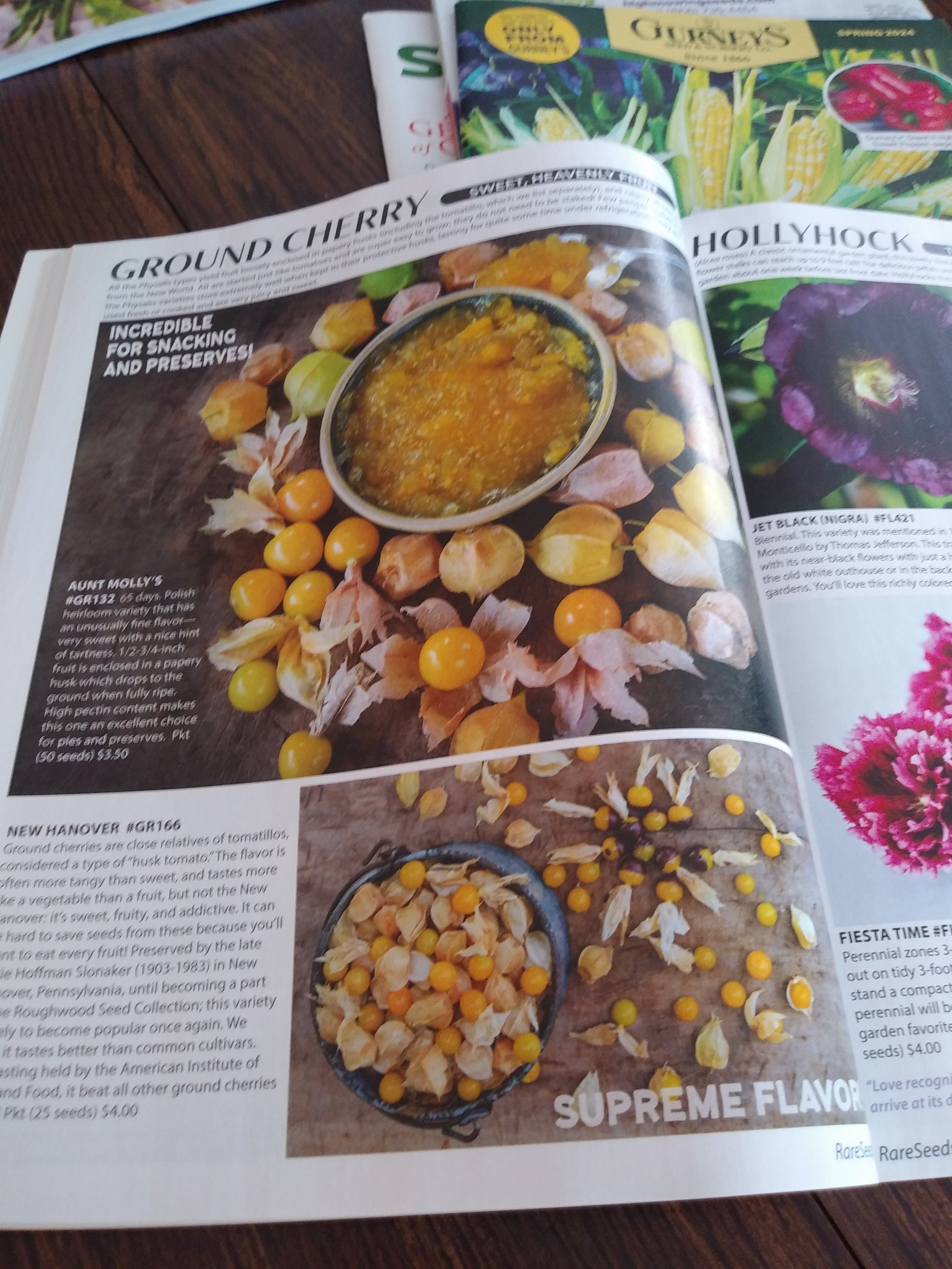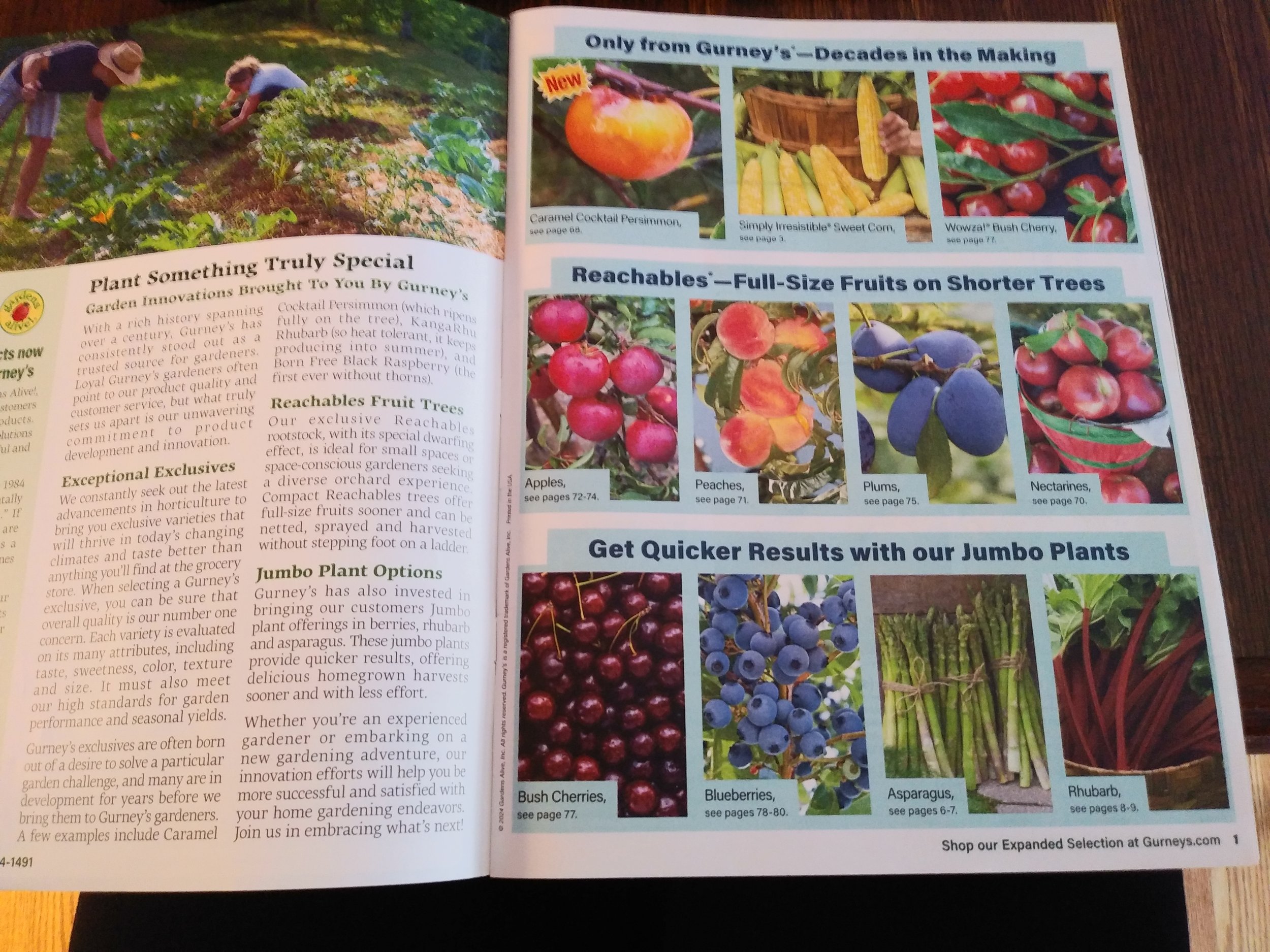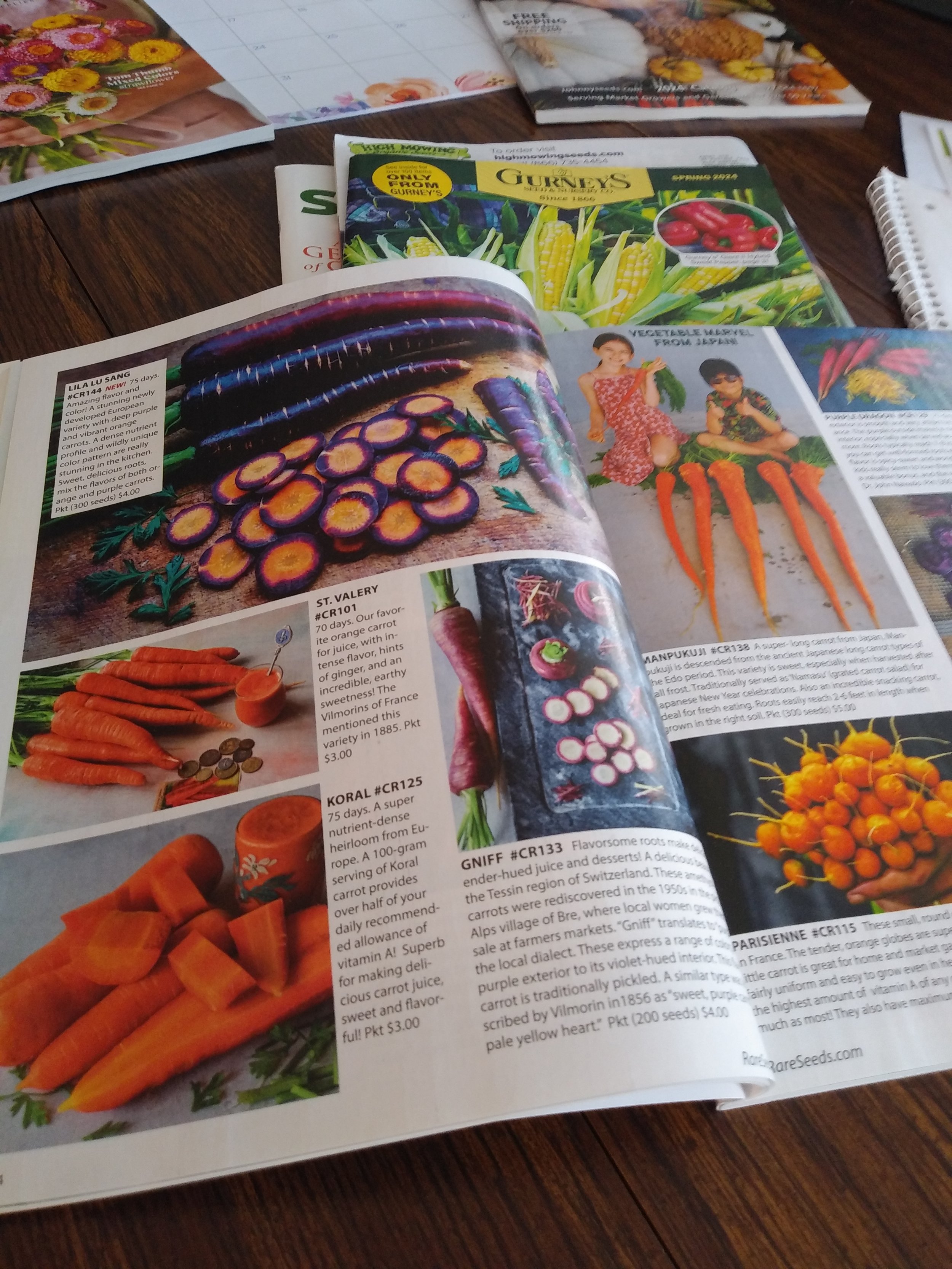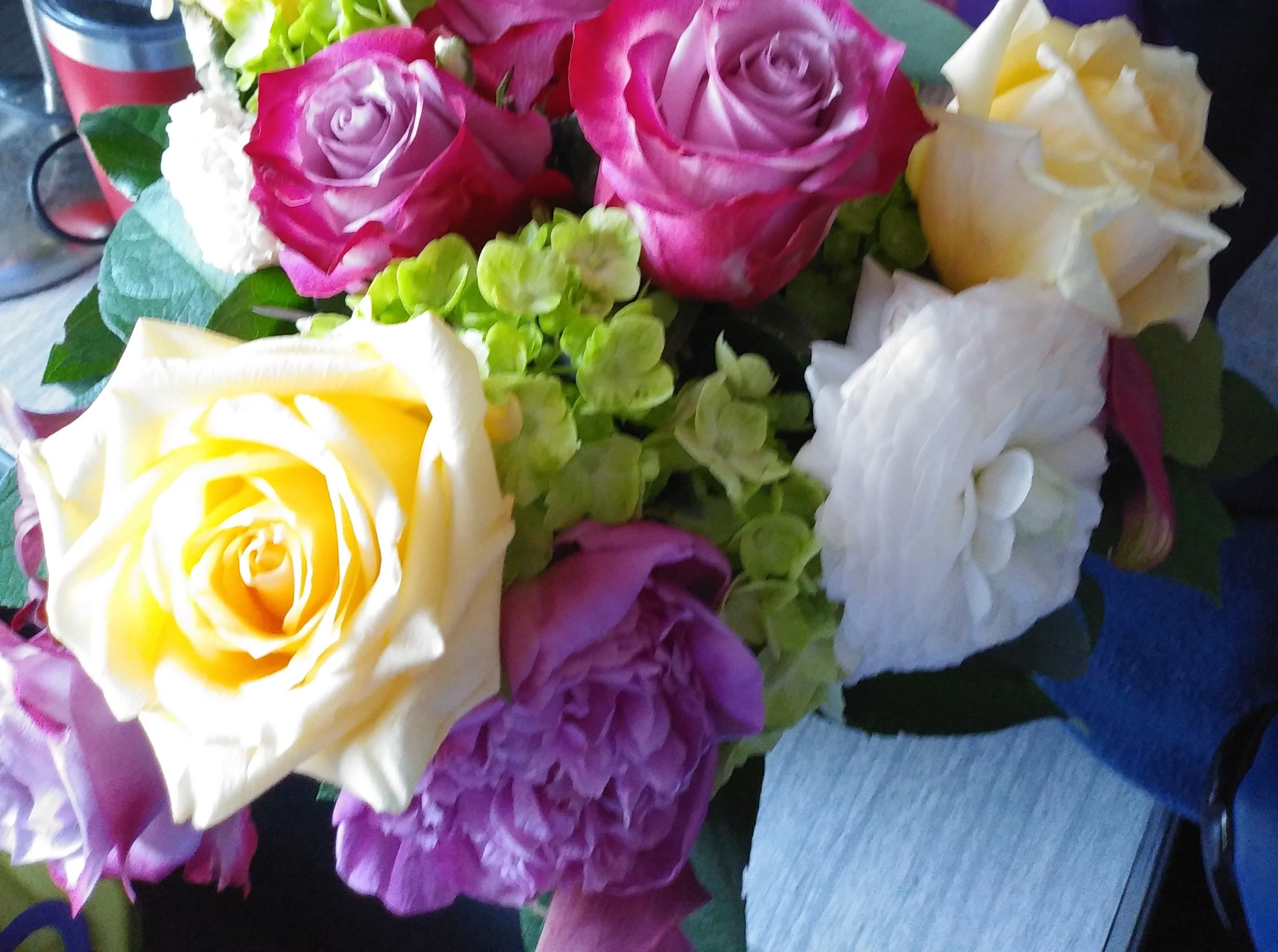Onion Update
The great onion plague!
Ever keep trying to get something done only to be encountered with obstacles and multiple failure? For me, this is starting onions from seeds. Last year, I started onions from seeds and they germinated quickly (within 8 days indoors) and for about a month in a half I had really decent onion shoots in little containers on a grow rack in my living room. However, each time I went to transplant outdoors, I was discouraged by torrential rainstorms. These downpours prevent transplanting and ultimately, result in my seedlings withering and dying.
This year, I tried to combat last year’s issues, by starting the seedlings about a month later to prevent indoor withering. However, this year I encountered an entirely new issue. My onions this year were slow to start and the shoots appears thinner and less healthy than last year’s plants.
Cut to a month after starting my onion seeds, the plans withered to nonexistence. My heart fell, another year of failed onions.
The photo above was taken a few days after the onion starts died and I determined they could not be revived. What was I to do? I had no more onion seeds to start and as we approach spring, I need to get onions in the ground and matured at a similar timing to other plants for the many products that I need to produce.
The resolution to my problem, onion sets/plants. For those who are unfamiliar, these are onions that have been started by growers and are further along. Resulting in quicker maturity time for gardener. I ordered three different kinds of sets/plants: Patterson yellow onions; redwing red onion; and, walla walla sweet onions. Each unit of onion sets/plants come with approximately 50 onions. This year I chose to get my sets from Johnny’s Selected Seeds in Maine given that they also are located in Northern New England.
My onion sets/plants are expected to arrive the first week of April and I plant to get them into the ground that Saturday, weather permitting. The reason I ultimately chose to pick onion sets/plants instead of another round of seeds was both based on timing and cost considerations. The cost was about $20 for each onion and the advance maturity was worth the cost in my opinion. I am hoping these onion sets/plants will give me the advantage I need to be successful with onions.
Although I want to and have a desire to start onions from seed and grow to maturity, I did need to make a call on what’s best for the current garden season. In the future, I will attempt to grow onions from seeds again but for the current year sets/plants was the best option.
Look forward to planting the onion sets/plants in the coming weeks and updates throughout the season.
A Berry, Berry Big Project
It’s a Berry, Berry World.
I do not know about any others, but when I think of the perfect fruit my mind always goes to berries. Specifically, the main four berries: strawberries, blueberries, raspberries, and blackberries. As such, since I purchased my home in 2022, I was always interested in putting a fruit orchard with multiple berry plants to grow and harvest.
To prepare for the orchard, I marked the trees that needed to be cut and cleared to open the area for incoming plants. After the trees were dropped, they were cut into portions and wood and leaves were piled and cleared. And then, the winter came.
During, winter I chose to order the raspberry favorite collection from Burpee. The collection comes with four types of raspberries: Heritage, Fall Gold, Killarney and Jewel. There are four plants of each type of raspberry, which is a wonderful start to my idea of what I want for my fruit orchard. More wood and sticks need to be removed; the soil needs to be prepped; I need to put up fencing to keep critters at bay; and basically get the area prepared for when the fruit will be shipped in mid-April.
Stay tuned for additional updates on the Berry, Berry Project.
March Garden Update
Grow Baby! Grow!
Three weeks ago, I started my onions and hardy vegetable seeds indoors. As a reminder, the types of onions that I started were Walla Walla, Patterson Yellow, and Barleo Red. For the hardy vegetables, I started three types of cabbage, broccoli, and cauliflower. I started these seeds because they are cold tolerant, and my area is very sporadic in March when it comes to weather. Therefore, I have two updates to my seedlings: (1) growth progress; and (2) up potting the hardy vegetables.
Seed Updates
The onion seeds were particularly slow to germinate this year. After three weeks, they only have about a half to a full inch of growth.
In contrast, the hardy vegetables were pretty quick to start. I saw germination within seven days and by week three they were a little overgrown and needed to be up potted.
Thinning & Up Potting Hardy Vegetable Seedlings
As the hardy vegetables have overgrown the small spaces in the potting disks, they were in desperate need of a bigger container. Therefore, I needed to up pot the seedlings. To start, I watered the seedlings. Then, I thinned the plants (this was accomplished by removing the smaller seedlings and weak stalk seedlings, so that only a single seedling remained in each potting disk). After, I put the potting disk in a larger container with soil, then I covered the plants with additional soil and watered. Last, I placed the pots back on the grow rack to continue to grow.
Hardy Vegetable Seed Start
Spring has sprung & hardy vegetables are popping up inside.
Here in frigid Northern New England, March is the time of year when we are tempted with spring weather during the day, but the night is an unbearable nod to winter weather and often dips below 25 degrees. As such, it is a great time to start my hardier vegetables that cold tolerant. This year the hardier vegetables that I started are: broccoli, cauliflower, kale, and three types of cabbage.
Seed starting hardy vegetables is pretty easy as I use seed starter pellets. See the steps below.
First, I soak the seed starter pellets in water so they expand.
Then I drain of the excess water and put the pellets in their respective trays.
Next, I gather the seeds that I need.
After, I pull the fabric back and press a little hole into the pellet for the seeds to go into.
I make the rows with tape to identify what seeds are growing in respective row.
Then, I put the seeds in the corresponding soil pellets and I cover up the seeds.
Lastly, I place the tray cover on and then patiently wait for the seeds to start growing.
Onions: Seed Starting
It all begins with an idea.
Last year, my onion seeds started off strong. However, prolonged time indoors caused them to whither to shriveled up strands. As a result, in November I did a lot of research on starting onions and when to start and transplant, specifically in a New England climate.
On February 18th, I started all of my onions. The three varieties I am growing this year are Walla Walla Sweet onions; Patterson Yellow Onions; and, Bareo Red Onions.
To start the onion seeds, I took potting soil and partially filled three seed starting trays. Then, I scattered the onion seeds a tray by seed type. Next, I lightly covered the seeds. After, I mixed water and fish emulsion and wet the soil. After the soil was sufficiently moistened, I put the cover on the seedling trays and put on the grow rack under the growing lights.
Now, I am just eagerly awaiting to see the onion seeds start. Over the next week or so, I will spay the trays daily to ensure the soil stays moist.
Planning the Garden 2: The Seed Order
It all starts with a seed, specifically a seed order.
It is an exciting time of year when January comes around, most gardeners have received the catalogs they ordered and are excited to start planning and ordering for this season’s garden.
My process starts by looking at my goals for the year. Then, I use excel to create a list of all the staple crops that I plan on growing, as well as the products I plan on making and storing and the underlying ingredients needed to create these products. See an example of my excel high-level plan below.
Above you can see I have a list of vegetables and fruits that I consume without modification (See column A) Then, as you move to the right you see the types of items that I plan on making and storing, such as salsa and pickles (See Column C). Last, I have a third column that includes the ingredients needed for the items that I plan on making, but the list is reduced by plants or vegetables that I have already listed in the column for staple crops (See Column D).
Another item that I chose to include this year was number of days to maturity (See Columns B and E). This was something I included to high-level start planning for how to optimize my succession planting and the time in between different crops.
After I created my high-level list above, the most arduous task of the seed order needed to occur and that is to take inventory of the seeds I currently have. During this process, I pull all my seed packets out and organize them by type. I start drafting a list of type of seed and amounts of seeds (i.e., full package; half package, etc.).
Once I have taken stock of my current inventory, I comb through the list and get a sense of what I need to order. Then I hunch over all my delightful catalogs, comb through the glorious pictures and descriptions of different seed varieties, and then write a list of what I will order.
This year my order consisted of a few berry plants, potatoes (both sweet, fingerling, and yukon gold), different cucumber varieties, honeydew, sage, basil and many varieties of tomatoes.
Lastly, I place my order with seed providers. A lot of times I rely on using gift cards because when friends and family ask me what I want for Christmas, I say a gift card to one of the seed providers. Then you just await your seeds arrival from USPS or another carrier service.
Look out for to the next installment: succession planting plan.
Planning the Garden: The Catalogs
A great garden starts with wonderful seed catalogs!
Some think that the gardening season starts in January, but I believe that the season starts in the October in the previous year. Before you can spend January hunched over the seeds you are excited to order, you have to first get the catalogs for the garden seasons. You can get your catalogs in print or electronic versions. Fortunately, many seed providers will provide their catalog to customers for free, you just need to provide your name and mailing address.
If you are looking for a compiled list of free seed catalogs, you can find them on the almanac website (here: 40+ Free Garden Seed Catalogs & Online Plant Sources | The Old Farmer's Almanac). During October, I check the seed providers that I enjoy’s websites daily until they are ready to collect information to put your name on the catalog list.
I have a handful of seed providers that I order from annually based on prior gardening experiences. Those seed catalogs are as follows:
1. Johnny’s Selected Seeds
Johnny’s seeds are absolutely amazing! They have a vast variety of seeds and the gardening tools they offer are incredible. I have ordered a variety of cutting knives and hardy plants from Johnny’s, specifically cabbages, onions, kale, broccoli, and cauliflower.
2. Burpee
Burpee is my old faithful catalog. It always has the type of fruits or vegetables that I am looking for when other catalogs fall short. In addition, since there are a lot of bugs near my house, sometimes I require hybrid bug resistant varieties, which Burpee has.
3. High Mowing Seeds
High Mowing Seeds also has a variety of seeds, but speaks to organic gardeners. In addition, I like that the seed provider is close to where I live, so I know the varieties are good for the generic area.
4. Gurney’s
Gurney’s is renown for the flavorful varieties of fruits and vegetables. I personally am a giant fan of their tomatoes (mortgager) and zucchini. They also are very generous with the coupons they provide on the front page of the catalog.
5. Baker Creek
Baker Creek is a classic seed provider catalog. I first became aware of this seed provider from other homesteaders. I truly enjoyed the dill and Ozark Green Bell Peppers that I order in 2023. These plants grew quickly and abundantly. I have reordered for this year.
6. Botanical Interest
Full disclosure, this is the first year that I have ordered this catalog. Last year, I got the a few Botanical Interest seeds from a small farmstand and coffee shop operation. I purchased eggplant, green beans, and sunflowers. I started these seeds indoors in February and the Botanical Interest seeds were the first to germinate, the strongest growing plants, and transplanted without any hiccups. So this year, I chose to order the catalog and expand the number of seeds I will purchase from this provider.
Once you put your name and mailing address on the list for your free catalog, all you have to do is eagerly await the arrival of your catalogs. The catalogs that I listed above, usually arrive between mid-November and the first week of January.
2024 Garden Goals
It all begins with an idea.
As winter comes to a close and people are shaking off the frigid air of February in New England, the blossoming excitement of this year’s garden plans starts to live rent free in my mind. Last year, since the property was purchased so late in the season, my garden plan and action were more of a scattered mess only resulting in mini garlic bulbs, delicious potatoes, and a handful of lettuces and cherry tomatoes. This year I have crafted a more detailed plan with three goals in mind for the season.
Goal 1: Succession Planting
This year to increase my yield and take advantages of the space available, my first goal is to focus on the succession planting. This means planting according to the parts of the season, this will start with cold hardy plants to be quickly replaced by warmer plants. This goal will also rely heavily on seed starting indoors, so that once items are harvested that space can be filled with a subsequent planting.
Goal 2: Companion Planting
Due to the location of the property (i.e., next to a freshwater marsh), the insects run rampant on the property. To reduce the impact of insects on my crops and ensure a fruitful harvest, I plan on relying on companion planting to reduce the negative impacts of insects on its companion. For example, I will plant rosemary and onions together, as rosemary repels onion pests.
Goal 3: Stock Up of Staples Crops
This year instead of half-hazardly growing a lot of cool sounding plants or vegetables that need do not store well, I will focus on growing a large yield of the crops that I eat most often. In this household, the crops that are most consumed throughout the year are: broccoli, onions, garlic, corn, spinach, and carrots. These are the items that I will grow in large quantities and then preserve through freezing, dehydrating or canning. Additionally, I will grow sufficient amounts of tomatoes and cucumbers to create a prepare a vast amount of tomato sauce and pickles, which are consumed in vast amounts in our house. I probably eat at least a jar of pickle spears on my own in a week.
Follow along this season to see how successful 2024 is for Honorary Homesteader!



